Dear friends,
Before beginning this episode, I want to add a little more about Lycia which I mentioned in my last story when showing a photo of the distinctive Lycian carved stone tombs. The earliest references to Lycia can be traced through Hittite texts to sometime before 1200 BC when it is known as the Lukka Lands. Ancient sources mention about 70 settlements of Lycia. These are situated either along the coastal strip in the protecting coves or on the slopes and hills of the mountain ranges. They are often difficult to access, which in ancient times was a defensive feature. The rugged coastline favored well-defended ports from which, in troubled times, Lycian pirate fleets sallied forth. Lycia is also recorded as having contact with both the Greek and Roman civilizations, granting the region a recorded inhabited lifespan of over 2,000 years.
Geographically, Lycia occupies the Teke Peninsula, a large U-shaped expanse of land between the Gulf of Fethiye to the west and the Gulf of Antalya to the east, in the southwestern corner of the country. In modern political terms, Lycia forms the southern half of Muğla Province and the western third of Antalya Province. As already indicated, this part of the southern Turkish coast is also often referred to as the ‘Turquoise Coast’.
The principal cities of ancient Lycia were Xanthos, Patara, Myra, Pinara, Tlos, Olympos, and Phaselis. In this and the next story, I will show and tell more of the ruins of Myra, Xanthos, and Patara. The Lycian league of independent city-states was the first such democratic union in history and the league remained strong in spite of the mountainous terrain, invasions of foreign powers, and attempts of tyrants to take power. It is interesting to note that this ancient Lycian League is thought to have influenced the United States Constitution.
Nowadays there is a well-marked walk of over 500 km known as The Lycian Way, named after the Lycian civilization that ruled in this region. The long-distance trail is waymarked after the French Grand Randonnee system, and the intersections are marked with yellow directional signs. The trails are marked on both sides of rocks and tree trunks at every 50 m, and the dirt roads at about 200 m along the route, especially at places like forks or crossroads, with signs of a white stripe above a red stripe. The signs are periodically renewed by volunteers.
For those interested in hiking, this map shows the trail and
also most of the ports, towns, and ancient ruins we visited on our trip
Continuing the story of our trip along the coast, a new day took us into Andriace Harbour from where we visited Demre, a small modern market town close to the ancient city of Myra, to visit the petite Byzantine Church of St Nicholas, the saint who is claimed to be the original Santa Claus. Nicholas, the 4th Century AD Bishop of Myra was famed for his generosity and piety. He was beatified and legend established him as the patron of fishermen and children as well as the patron of bakers, brewers, and brides! He was respected as a saint in Tsarist Russia and in many other countries of Europe and his story and legacy continue on today in all parts of the world as Santa Claus.
A statue of St Nicholas in Demre complete with beard, sack, and children
Painted ceramic plates on display in Myra – note a more modern Santa Claus bottom right.
Myth and legend aside, the church, which has undergone a number of excavations, additions, and renovations, is a delight to visit with beautiful uncovered frescoes and vaulted ceilings. The renovations continue today with a dedicated team of experts working to restore many of the treasures.
A view from above showing the extent of the church and renovations
One of the renovation team doing the painstaking but rewarding work
Many of the frescoes on the walls and ceilings have been lovingly brushed back into life. Below are some of these paintings, and I will try to identify them correctly from memory from the visit and the few books I am consulting. Not only were they impressive in their scale and complexity but they were overwhelmingly beautiful.
The ‘Sea Miracle’. Sailors en route to Jerusalem beseeching the saint with fearful eyes
and praying “May St Nicholas hold the tiller”
A depiction of angels
Saint Nicholas, part of a painting where he is helping a woman
An angel above the crucifixion scene in the burial chamber
A scene of a religious gathering
Over many centuries and until today people have come to the church, asking for the blessing of St Nicholas
Probably more interested in food from the tourists, than in asking for the blessing of St Nicholas (but you never know), these two cats near the church caught my eye.
Would you look at those eyes!
Just a curious wee white kitten
Just a couple of kilometres away from Demre is Myra an ancient city that dates from around the 5th Century BC and which grew rich on coastal trade, supplying incense to Rome and Constantinople. Today the city is some 5 kilometres away from the coast because of the alluvium carried by the Myros River making a vast alluvial plain, a fate which has befallen so many of the previous thriving ports along this coast. Nowadays the dense vegetation on the plain has almost overtaken the ancient with the theatre and the rock-cut tombs being the most important visible ruins.
The tombs feature richly carved facades, some still bearing traces of paint applied by the original builders
Burials must have had an important role in the beliefs of the Lycians, for they cut hundreds of tombs into rock faces and crags that can be seen throughout the area. They were probably copies of domestic architecture intended as houses for the dead. Most have carved doors, beam ends, pitched roofs, and prominent lintels, typical of construction in wood.
Impressive details of one of the house tombs at Myra
A relief next to one of the tombs probably depicts the tomb owner and perhaps the smaller figure is his slave
Many stone blocks and pillars (above & below) with intricate carvings can be found throughout the site
The theatre at Myra is bigger than those in other cities and still stands intact. The Roman-style theatre is 108 metres in diameter with thirty rows of seating. Changes were made to the orchestra pit in the late Roman era, so that gladiator games could take place there. The theatre could seat almost 11,500 spectators.
A view from the top of the theatre. Note the raised walls added later so that they could host gladiator games
Our colleague Roger intent on climbing the huge stairway to the top of the theatre
That was quite a lot to take in for one morning, so like on other days, we retired to a nearby cafe for some refreshing black tea or Turkish coffee depending on your tastes, and a bit more information from our excellent guide Yunus.
Getting some key information from Yunus while we wait for our refreshments
We had a relaxed lunch and afternoon on our gulet as we cruised to Gokkaya Bay in Kekova Sound before a two-hour hike over an isthmus and farmlands along village trails to the village of Kalekoy (the modern name for ancient Simena). This timeless village, accessible only by sea, has breathtaking views from the Crusader-era castle overlooking Kekova Sound.
A little deserted bar at the beginning of our walk with a lot of NZ features. I wondered why?
Our destination, the Crusader-era castle (built around 1440) silhouetted in the distance
Almost indistinguishable among the rocks we spied a turtle, his head tucked into his shell
Bright bougainvillea flowers against the brilliant blue sky seen along the way
We passed a number of sarcophagi as we neared the castle, with a grand view over the sound
King of all he surveys. Even here, there were cats.
Looking down to the town’s harbour from the top of the castle
And there she is – our Cavurali moored out in the sound
Private ownership and buildings are normally forbidden in this reserve.
However, money talks, and at least this millionaire designed a house that fitted the landscape
Descending into the village, this little kitten enjoyed playing with the end of my hiking pole.
We stopped at a cafe in the village for delicious ice cream, and I was befriended by another little kitten.
He loved the few drips of ice cream I fed him. The owner asked if I would like to take him.
“I have 10 more kittens”, he said. I was tempted, but …
Looking back to the village of Kalekoy with the castle looming above
Moonrise over Kekova Island
The following morning we donned our hiking boots again to meander through a number of ruins and farming land, and in the afternoon we cruised past the drowned ruins of the ancient city of Aperlae before anchoring and snorkeling there to see what we could see. Actually not that much other than some walls and pathways, but it was a pleasant swim nonetheless. We spent the evening in the little fishing village of Kas, now quite a popular tourist town on a lovely harbour. Kas means ‘eyebrow’ in Turkish, perhaps because of the shape of the bay it sits on.
An abandoned cottage we passed on our hike
Someone’s weekend get-away house. What a beautiful position
We climbed up the hill to see an ancient cistern and took a typical hiking track on the descent
A stone staircase and …
… the outline of buildings above and below the waters at Aperlae, right where we snorkeled.
The dingy ride back to our gulet, but first …
… a quick stop to see a Roman arched bridge on the coastal walkway
Captain Yavus, steers us into the harbour of Kas
The village square complete with a totally relaxed sleeping hound
Ice cream, anyone?
Or some of the truly delicious Turkish Delight?
Or maybe some spices?
Many lovely little restaurants to choose from for our evening meal
A shopping street, happily not crowded where I bought some earrings with – guess what – cats on them
And of course there were many cats to photograph, but just showing one here
Shops catering to every craving
Finishing the evening with a shot of tequila, Jeanne chatting with the owner of the bar
Another evening ended, the harbour at Kas
This was a rather long episode covering two very full days, so I hope you have hung in till the end. There is plenty more to come and I will endeavour to be brief, but it really was a fabulous trip and I hope you are enjoying the voyage with me so far.
Until soon, my friends and followers
All good wishes,
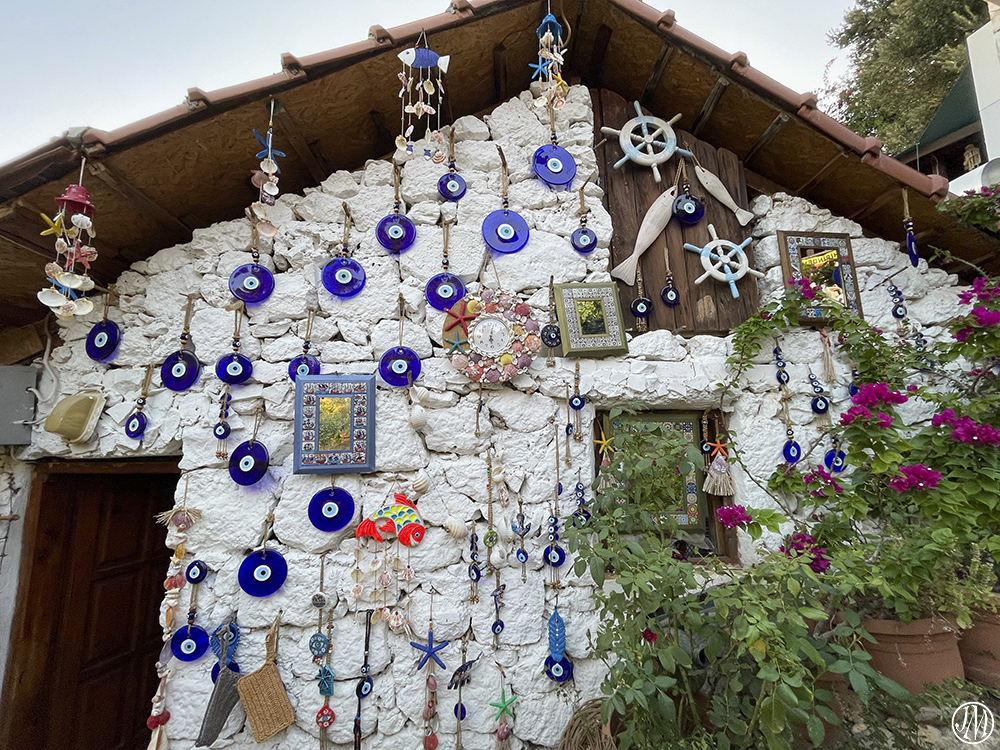

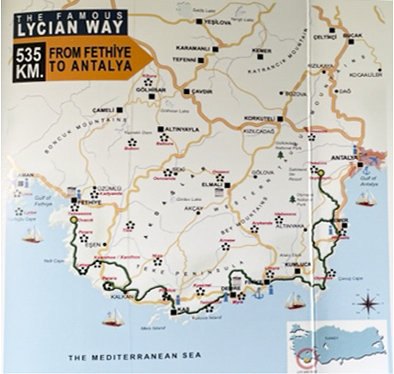
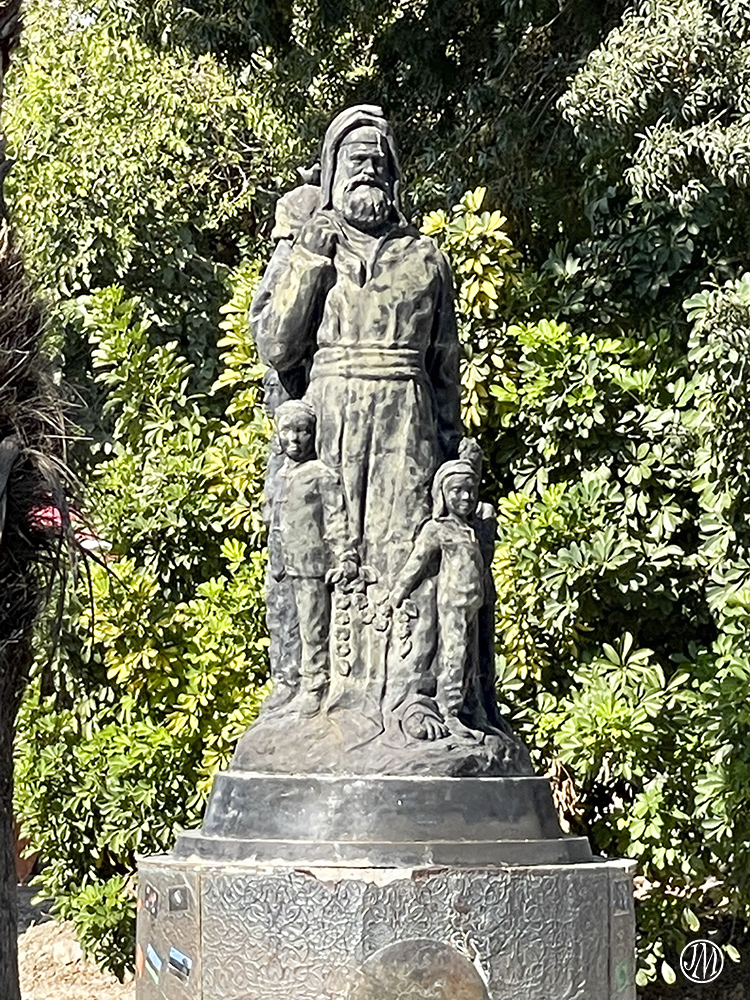
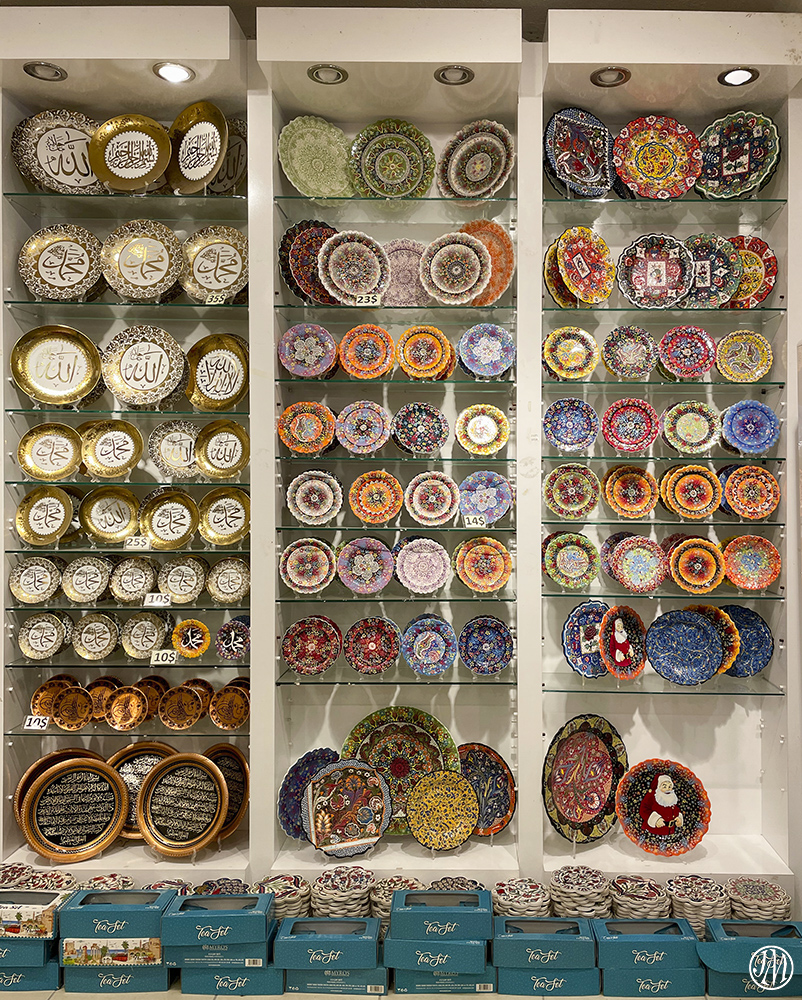
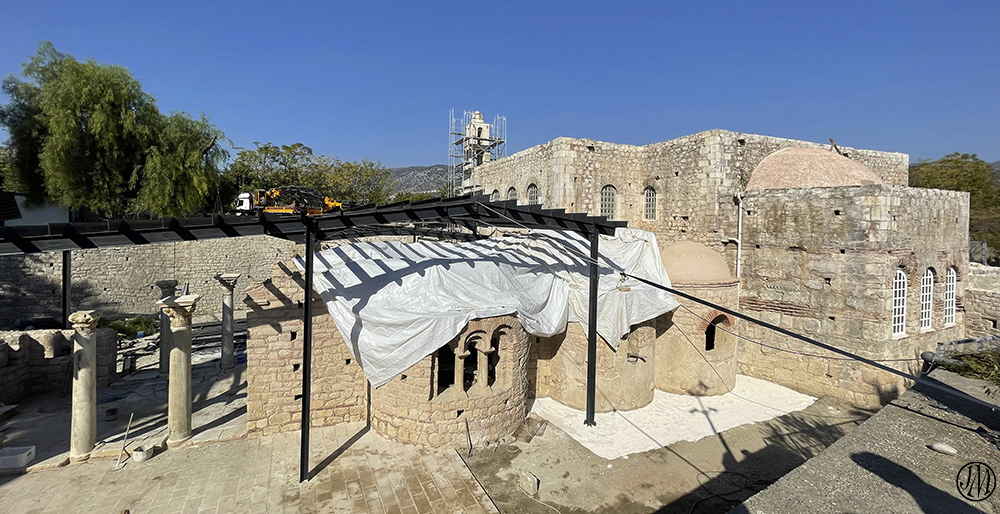
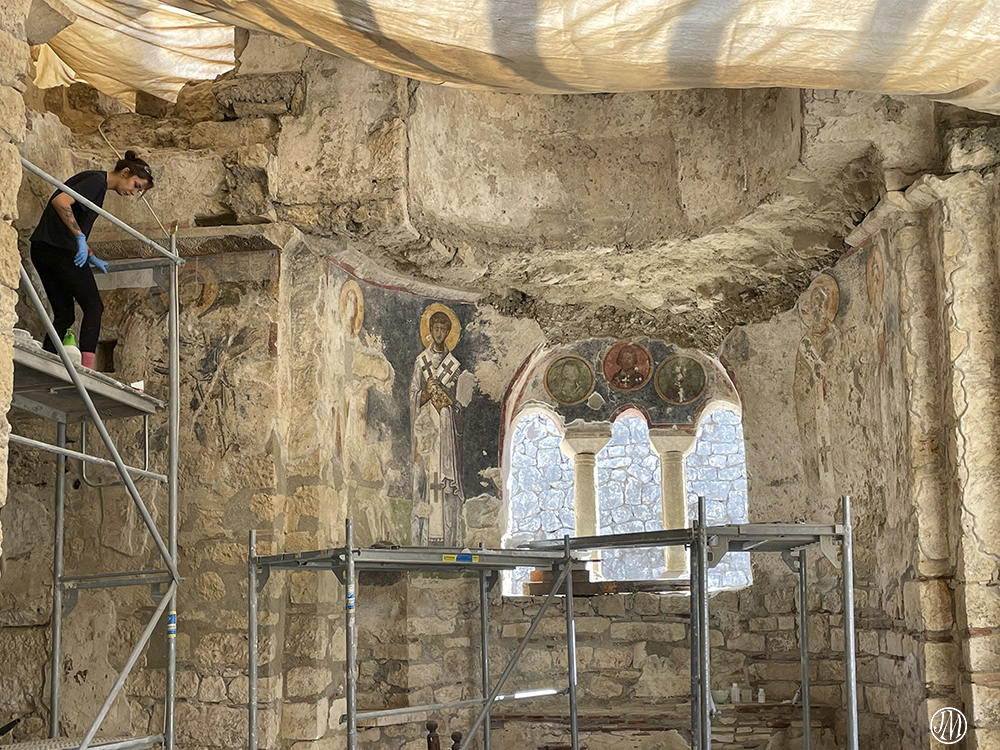
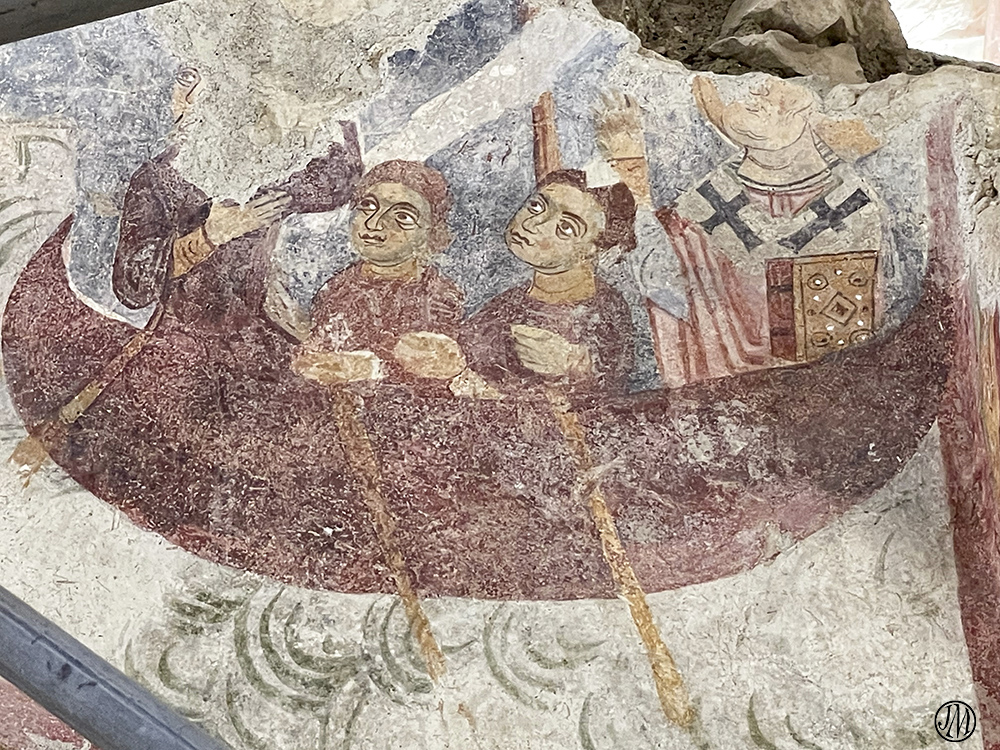
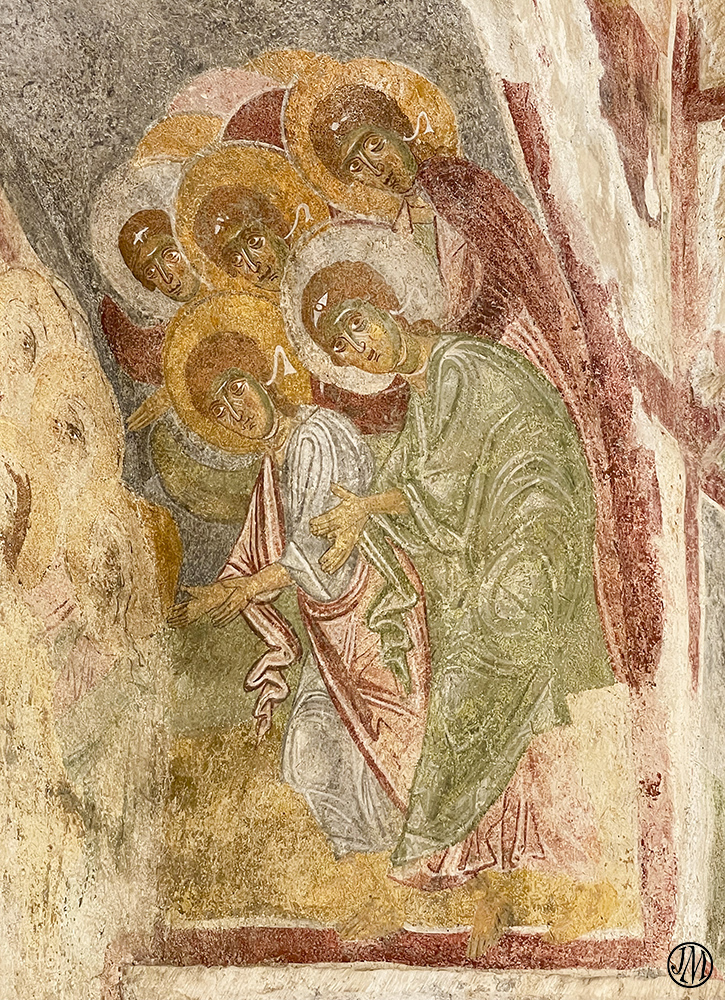
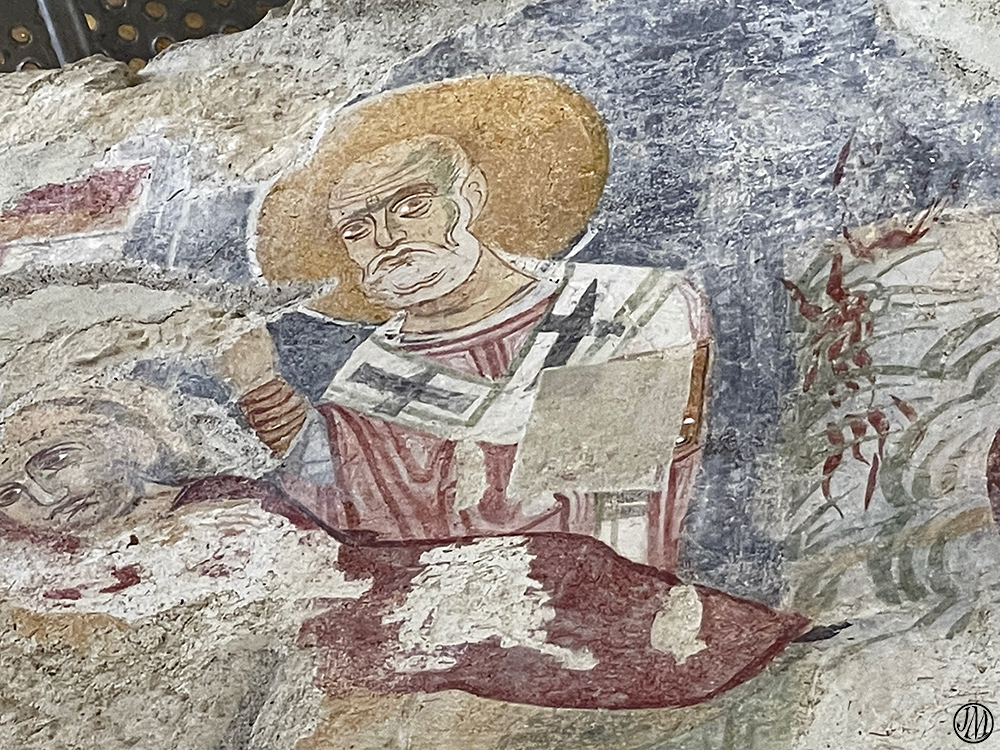
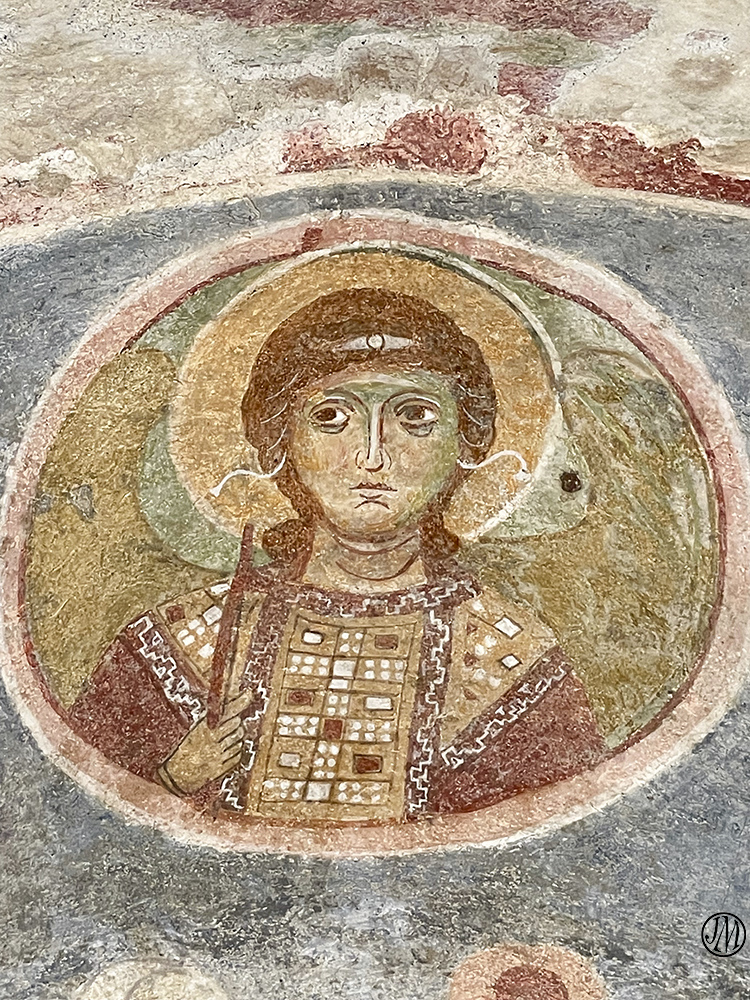
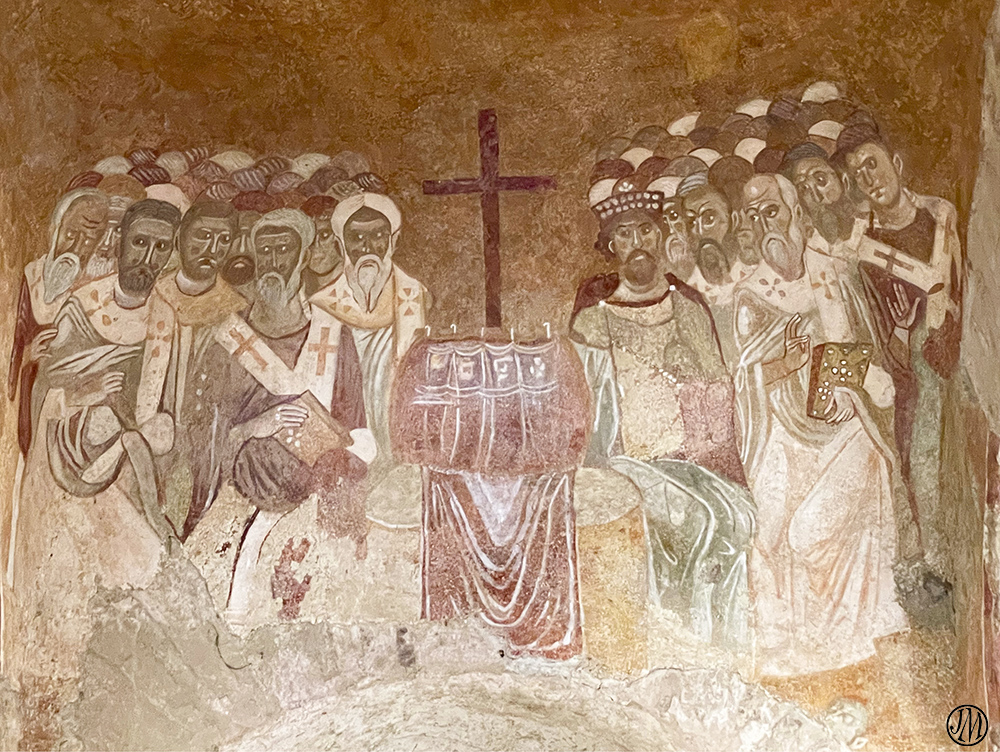
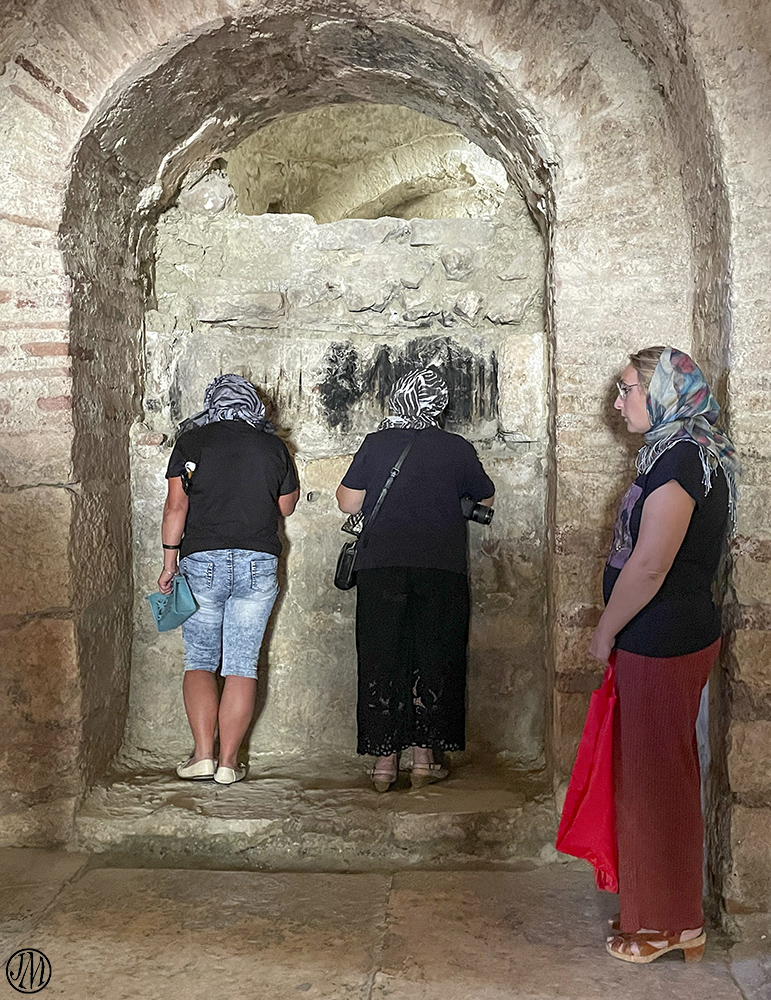
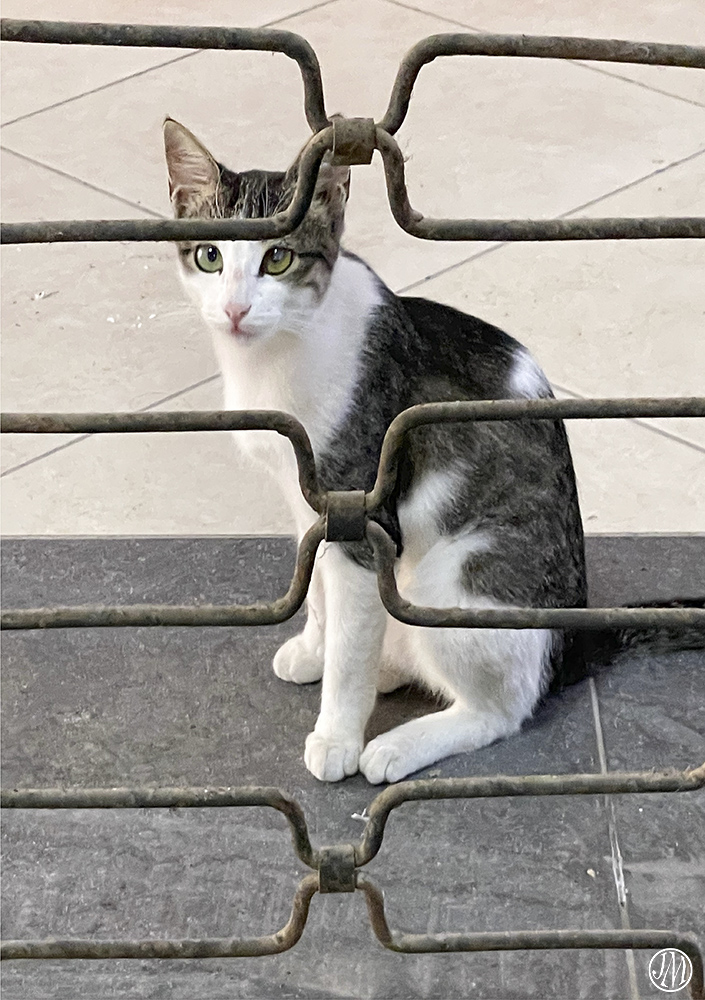
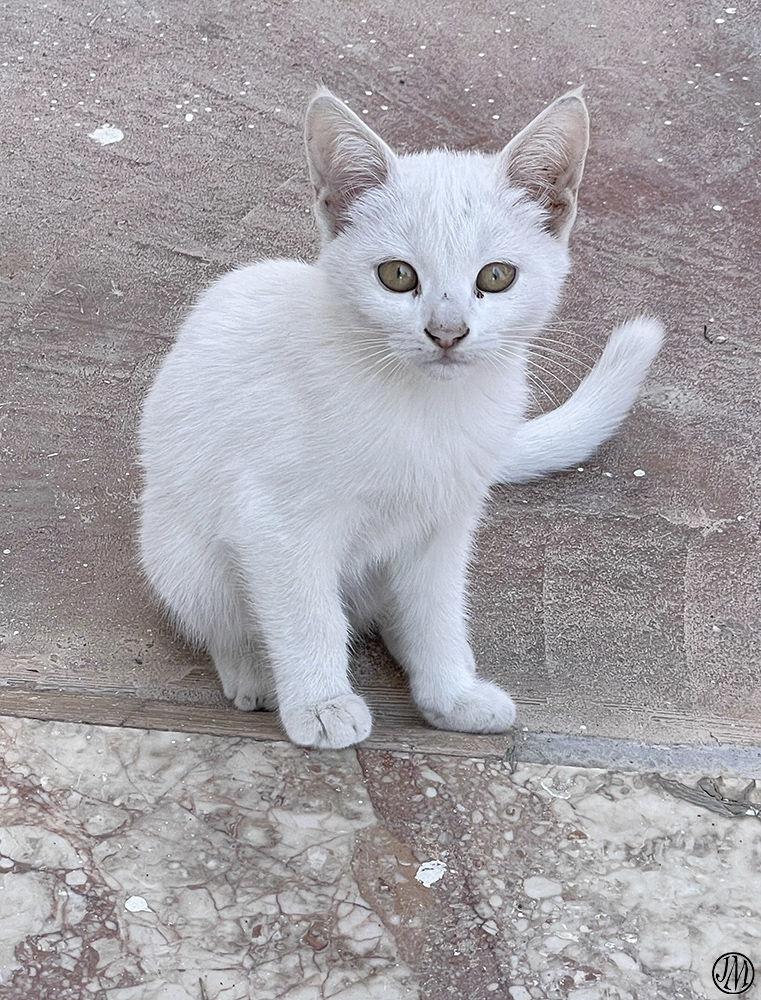
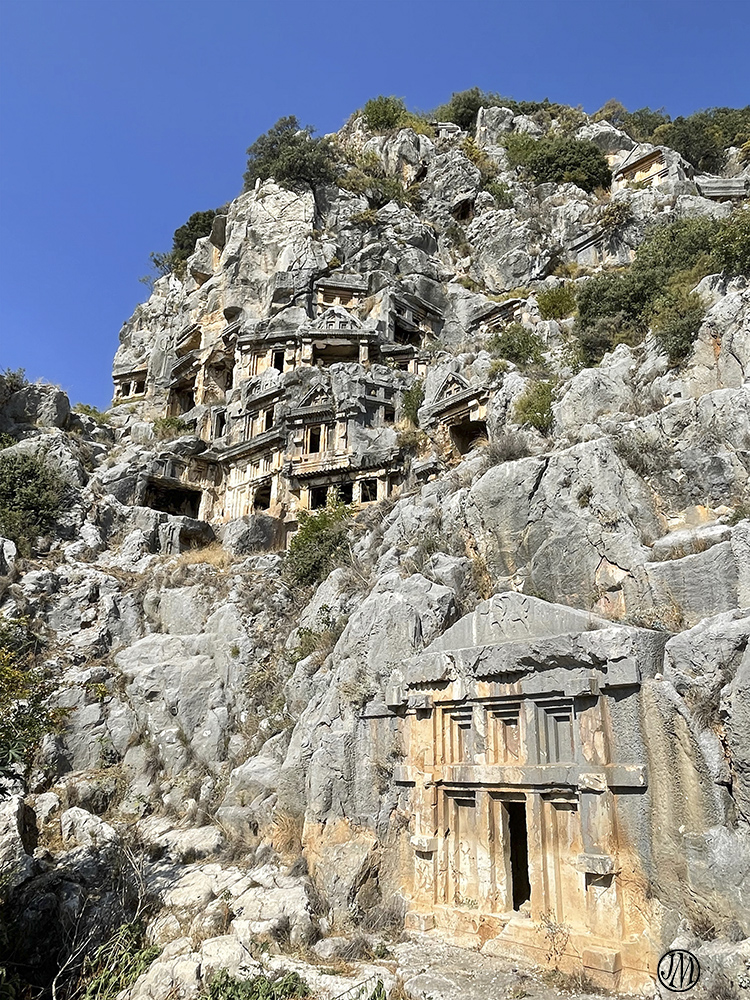
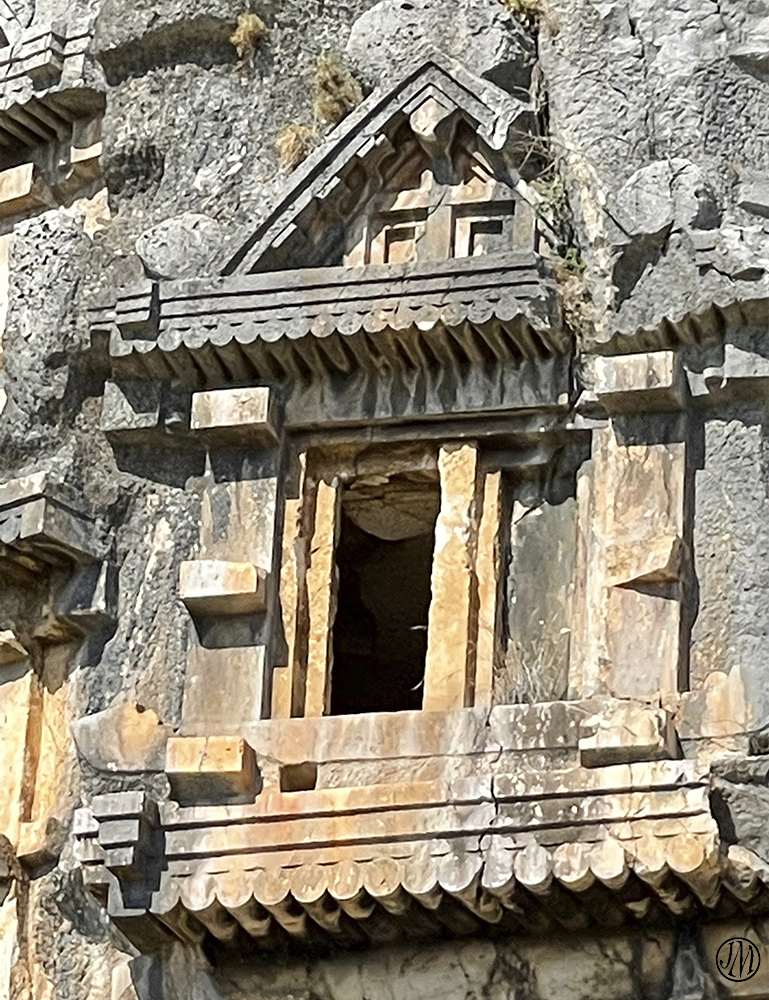
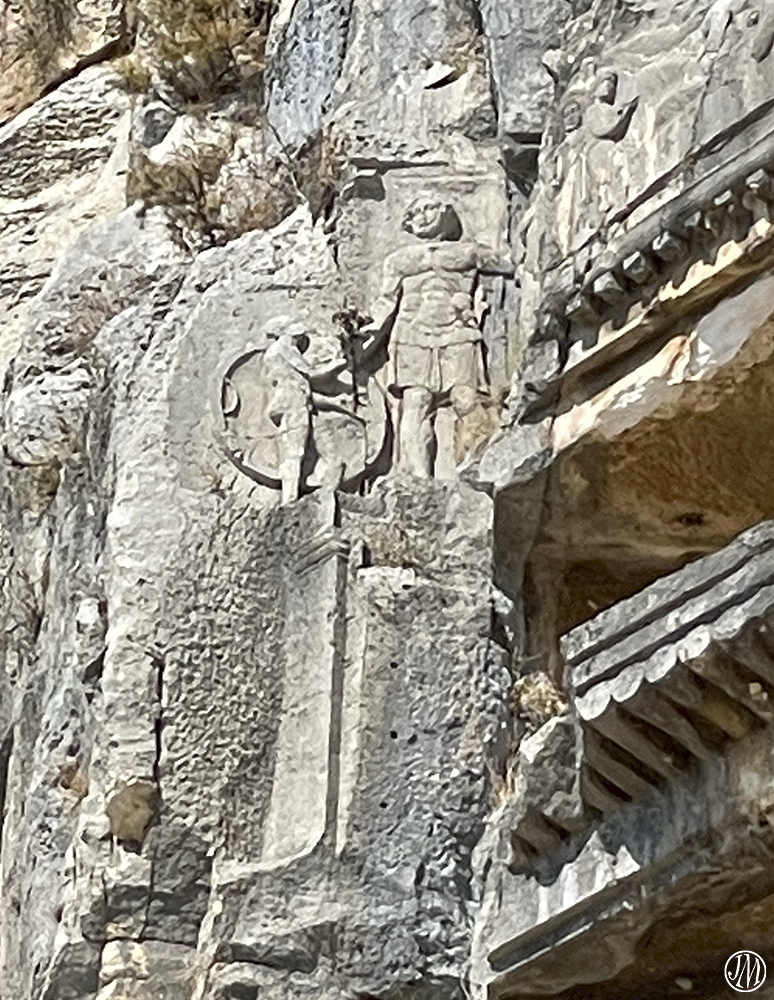
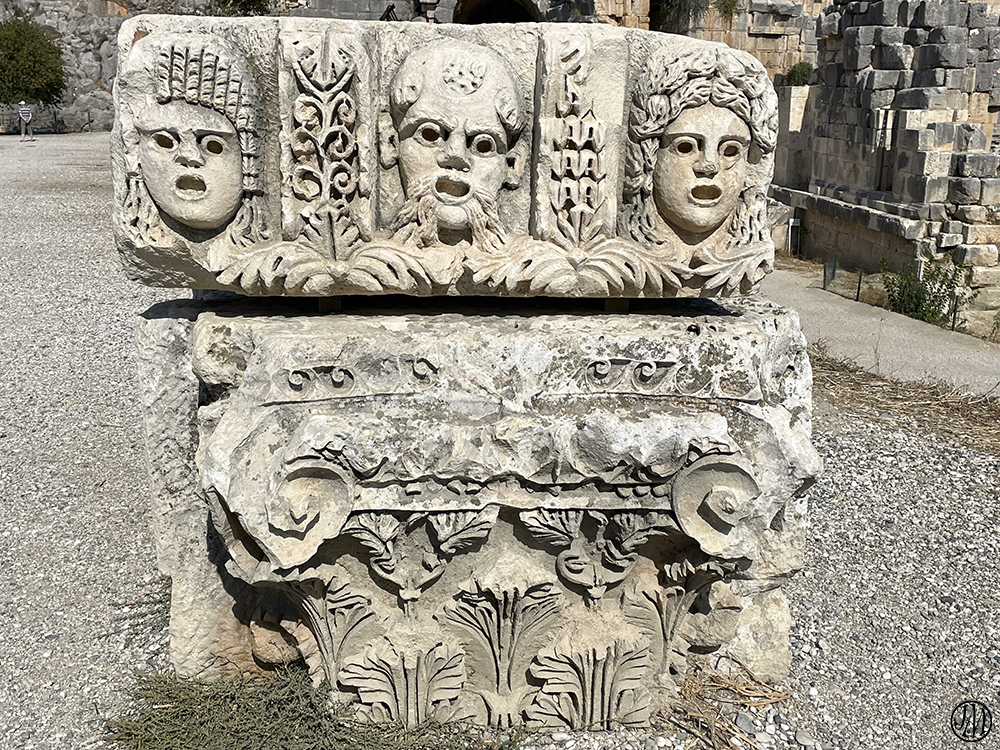
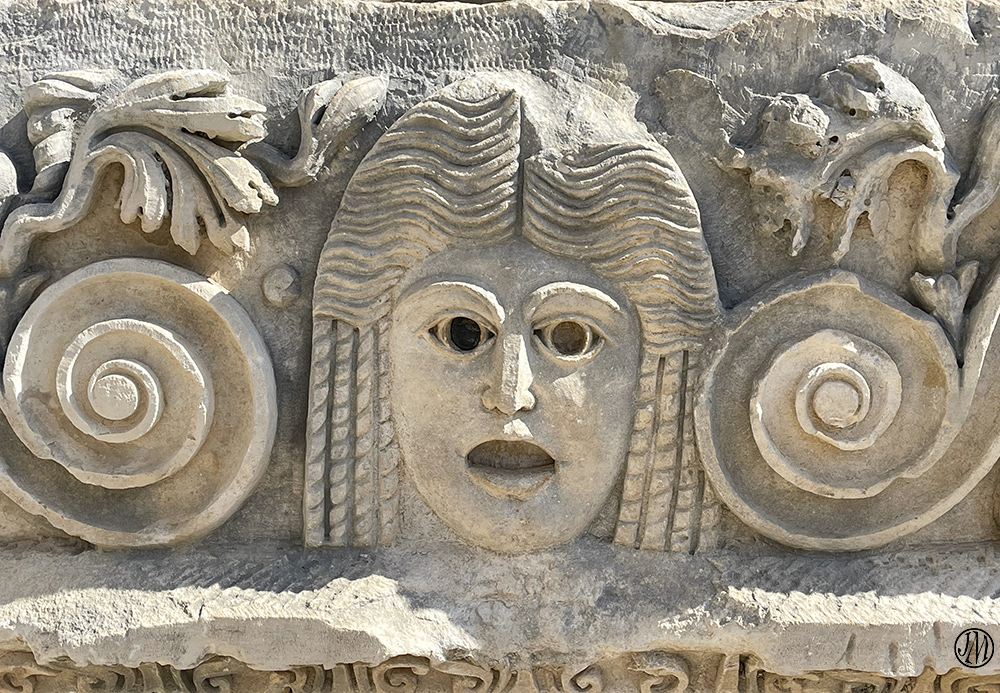
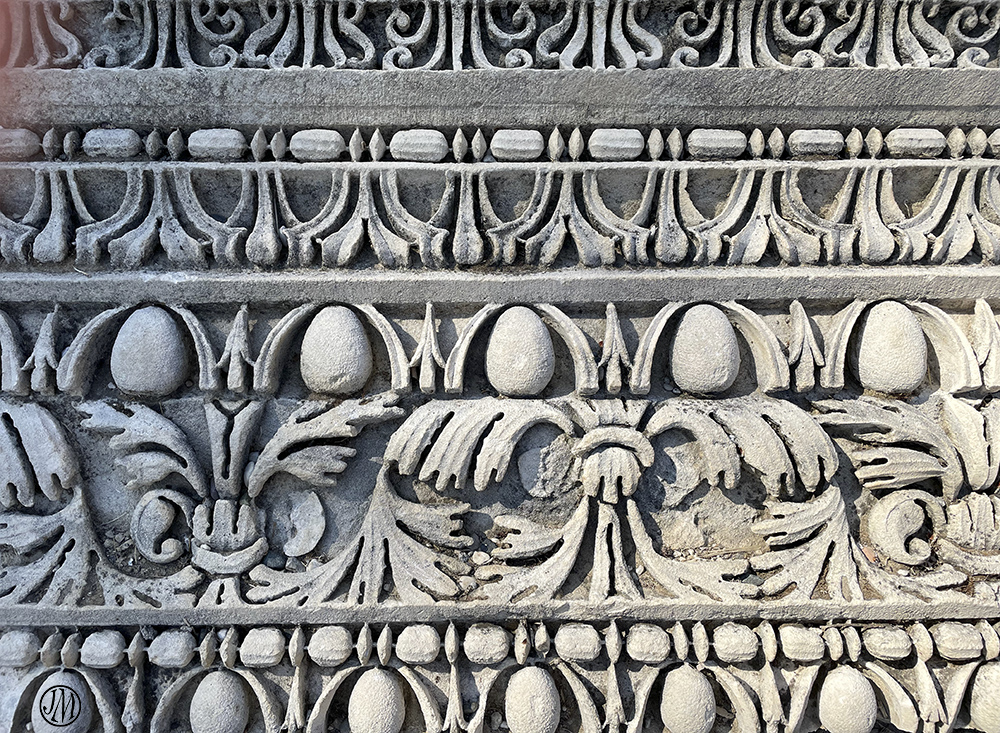
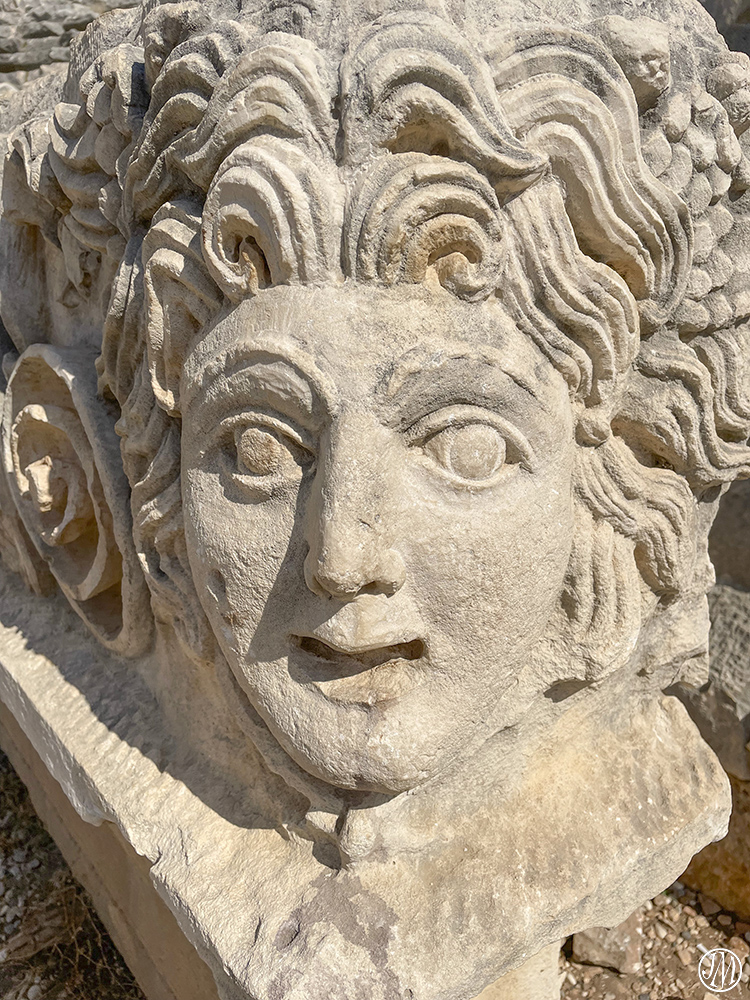
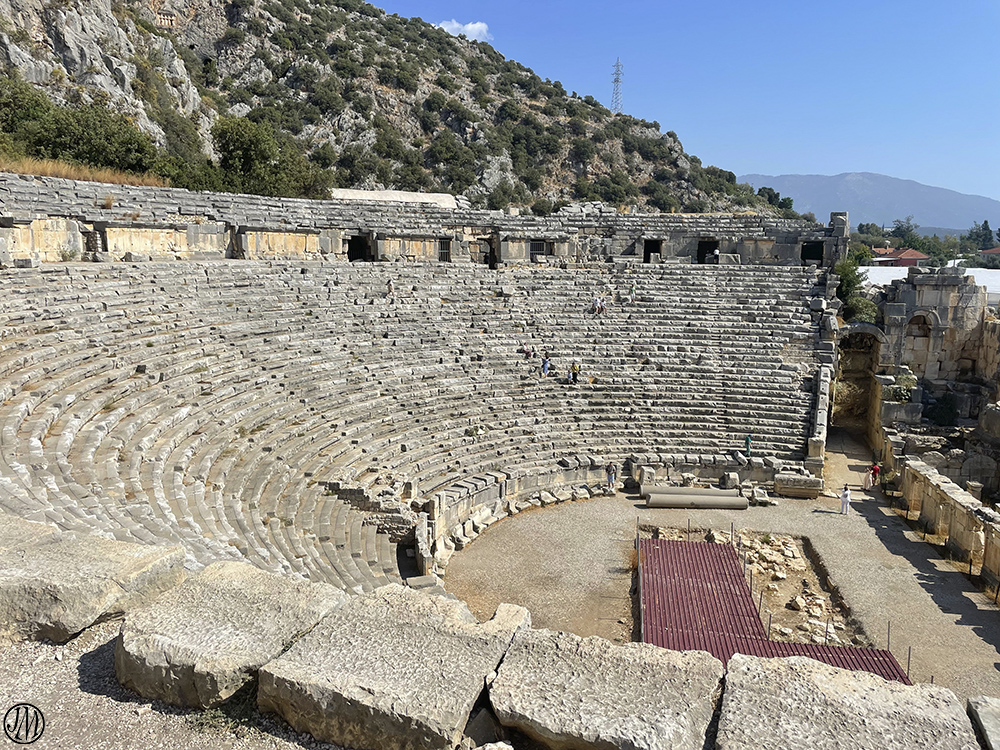
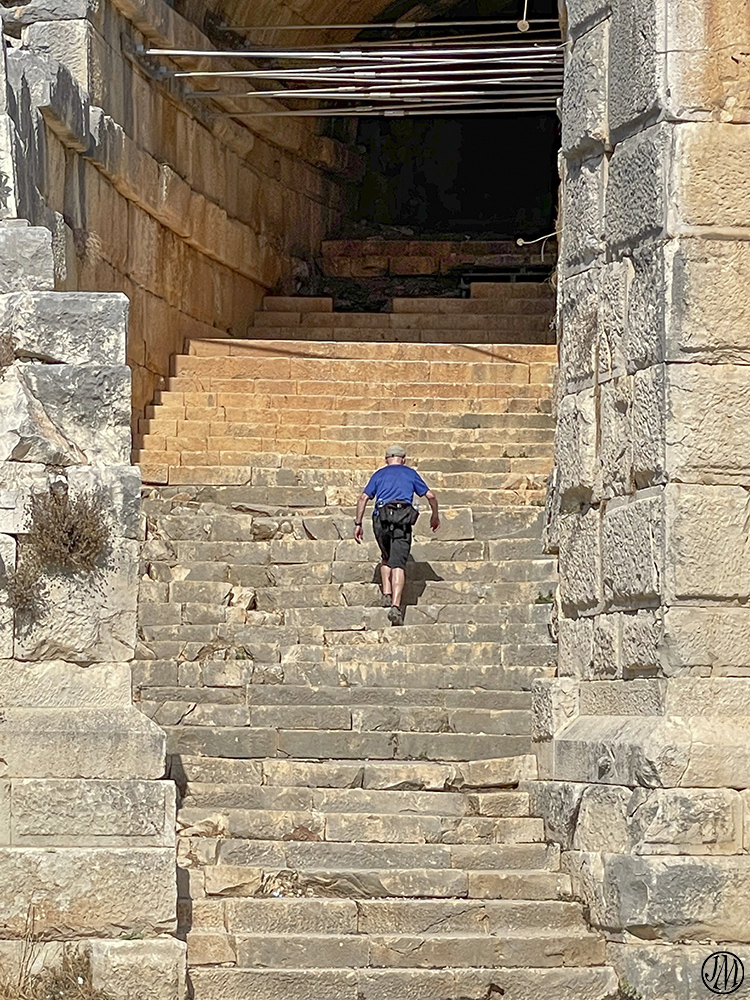
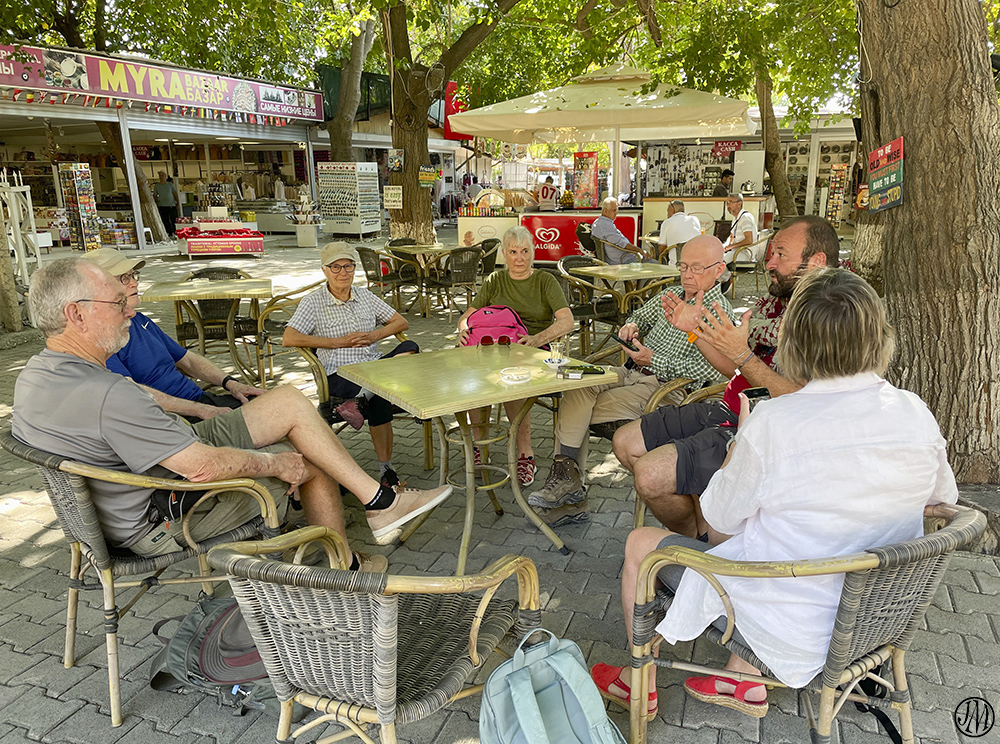
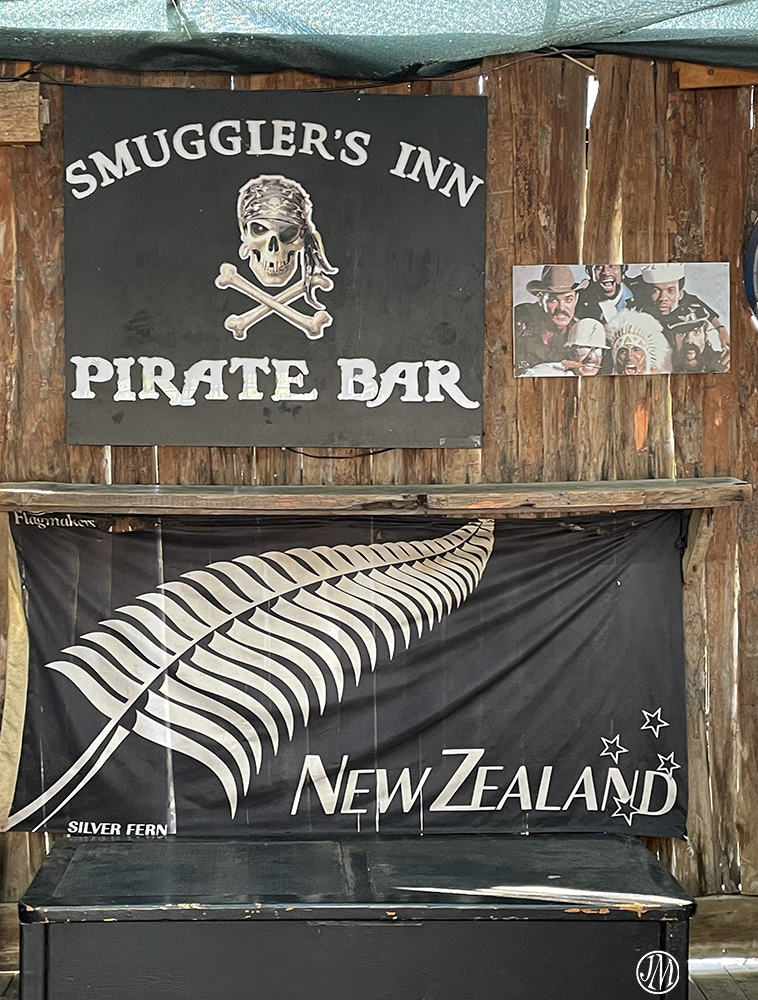
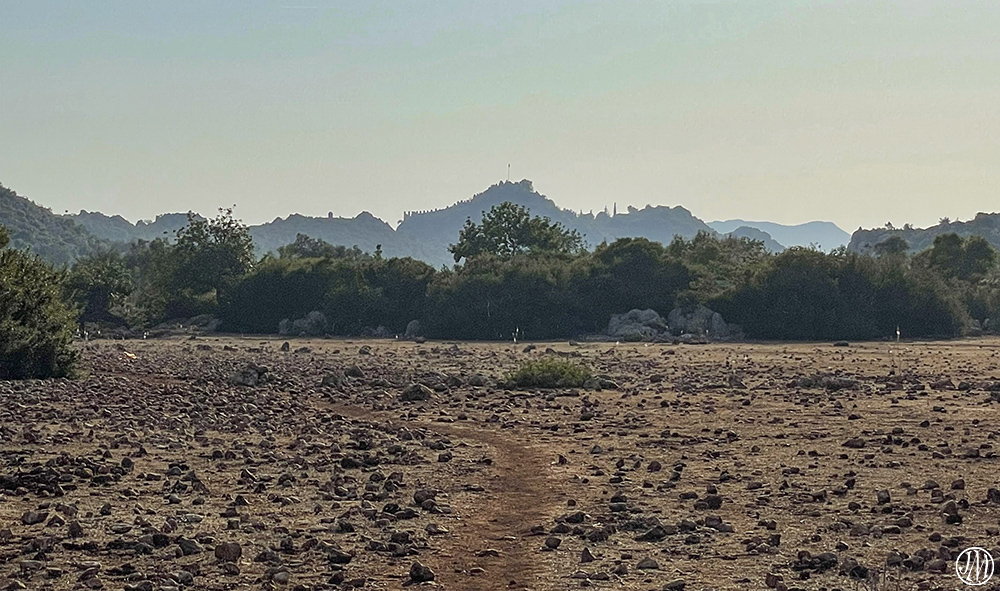
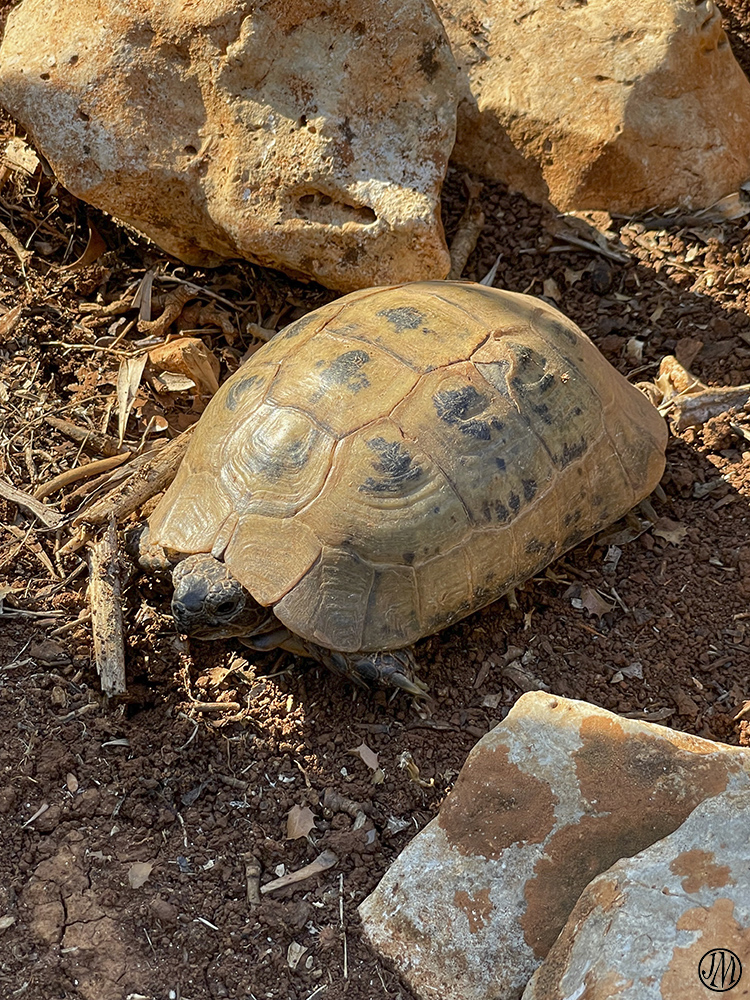
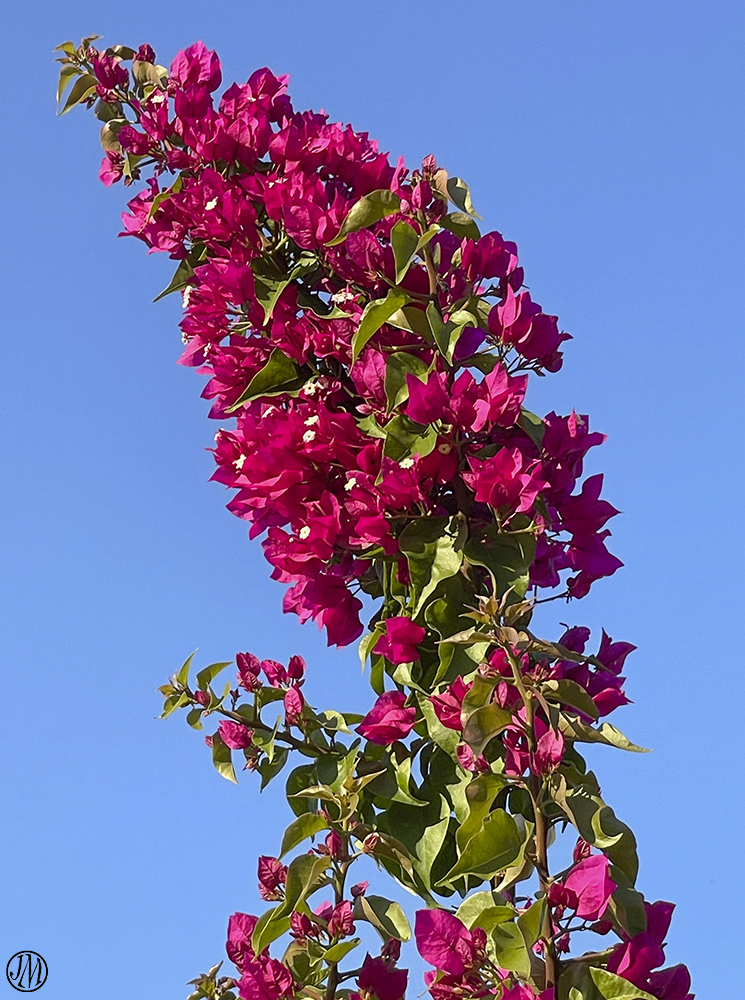
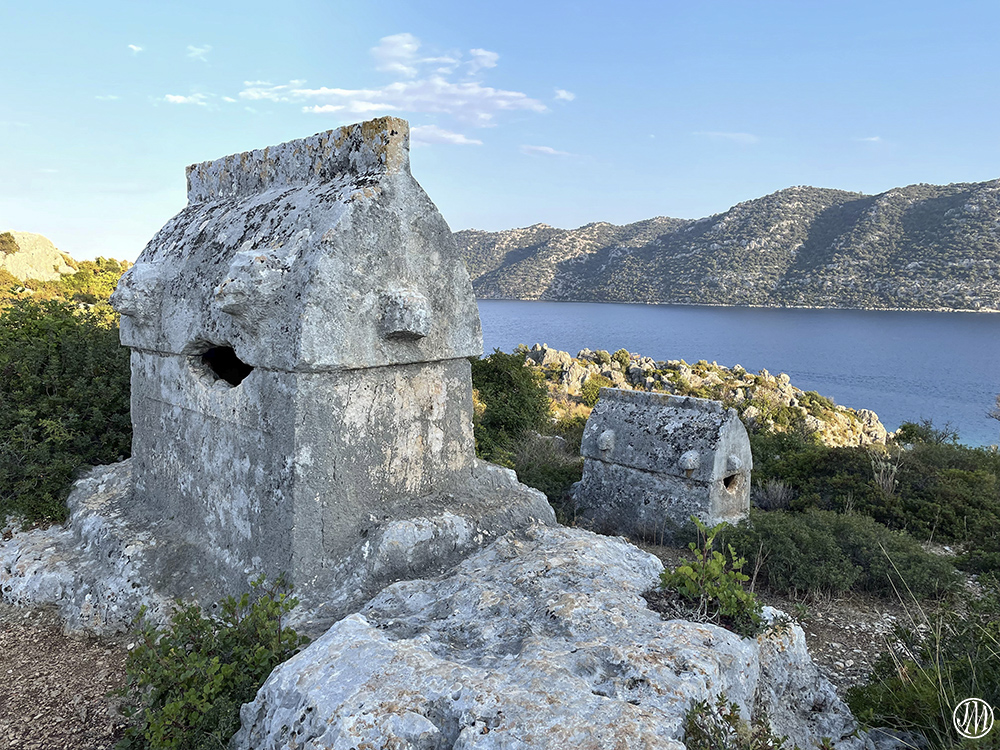
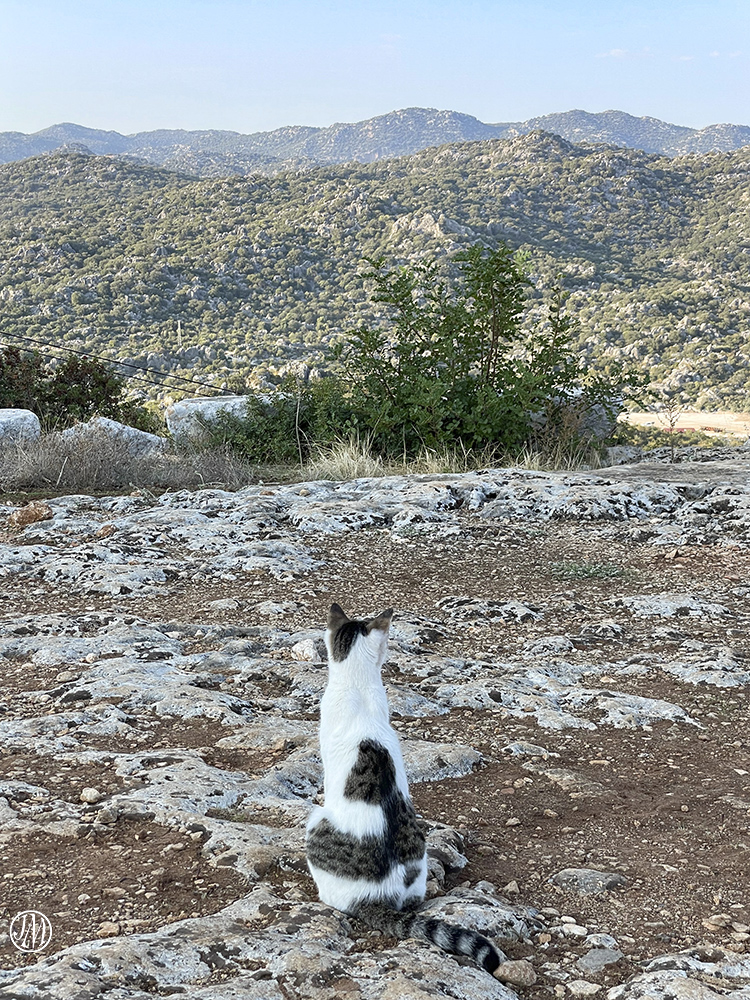
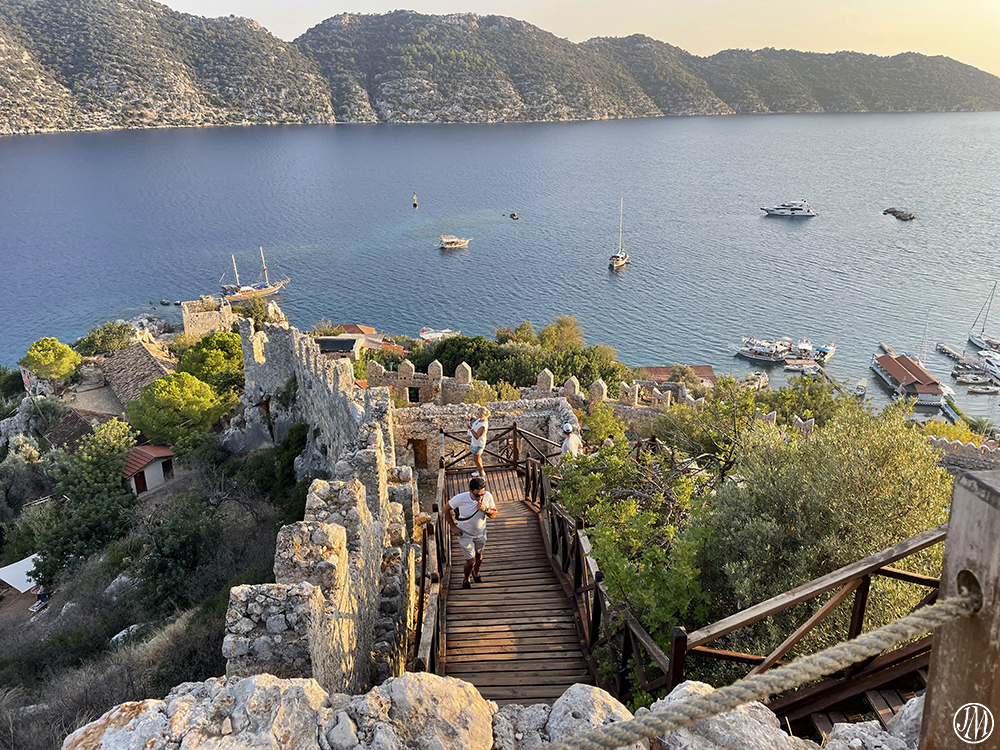
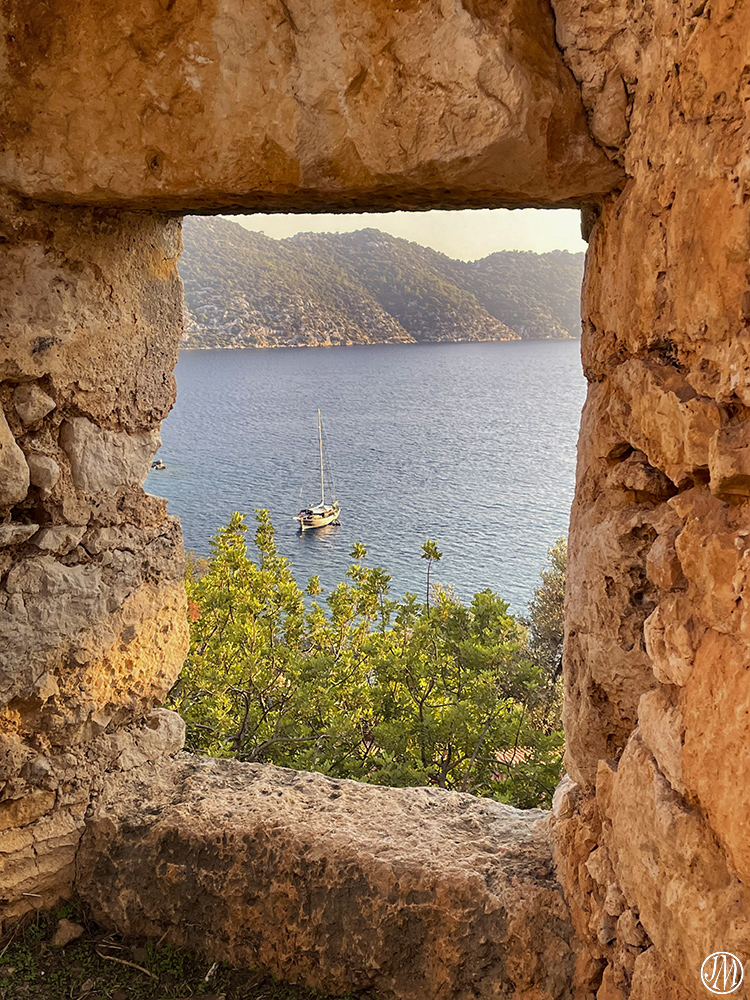
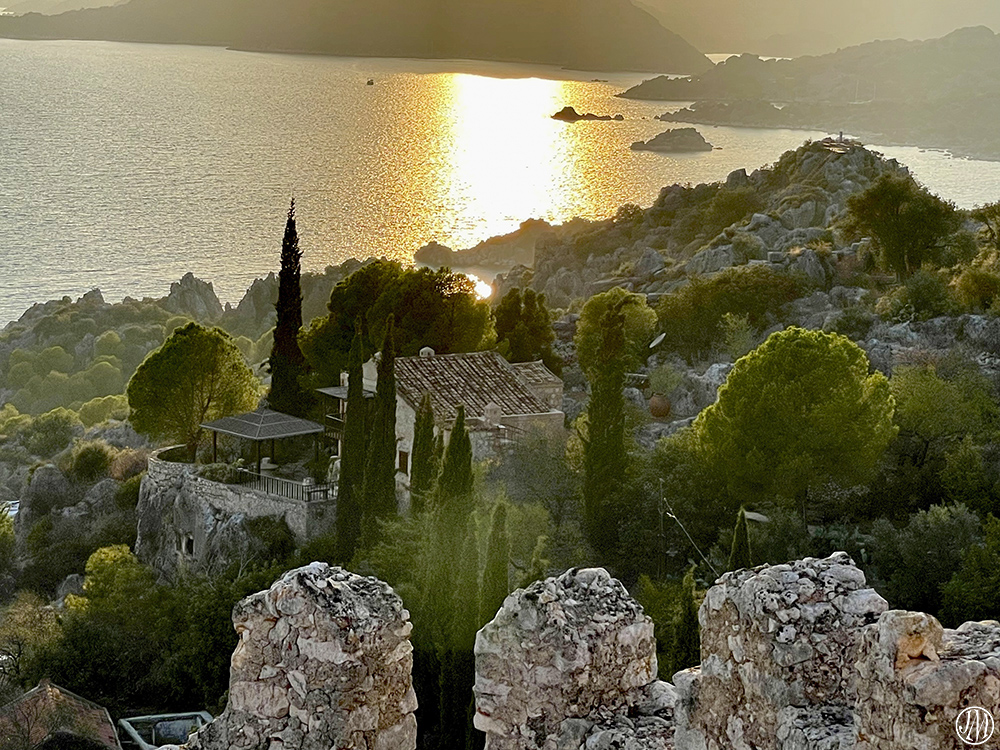
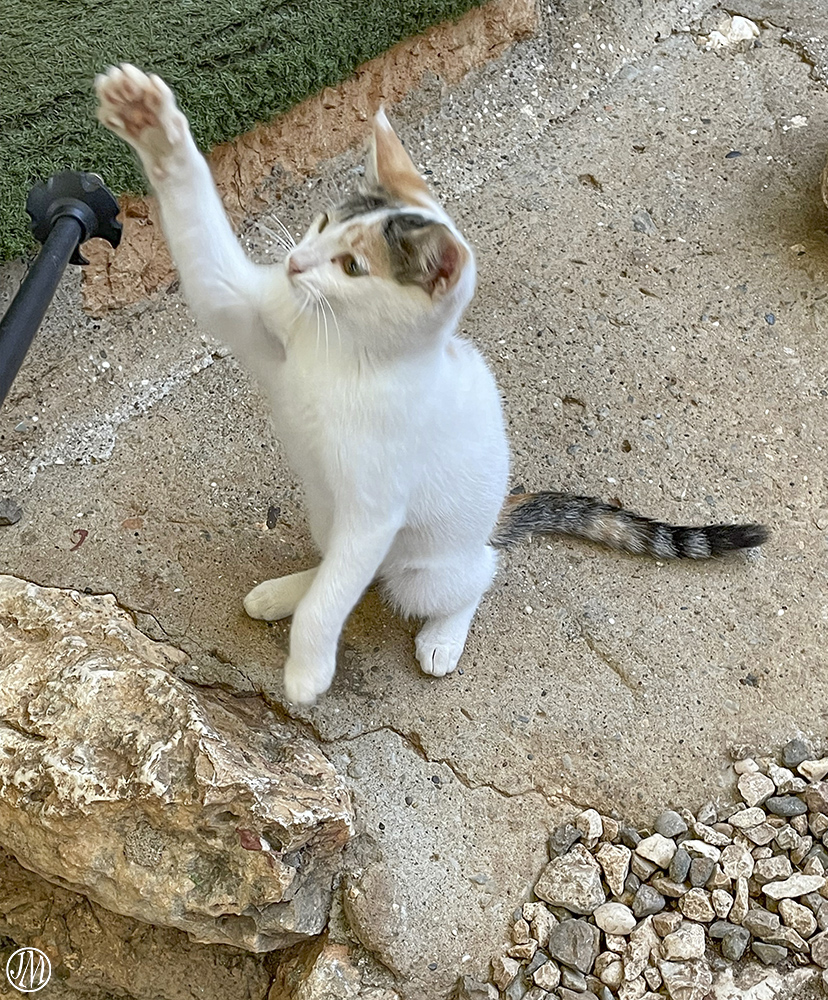
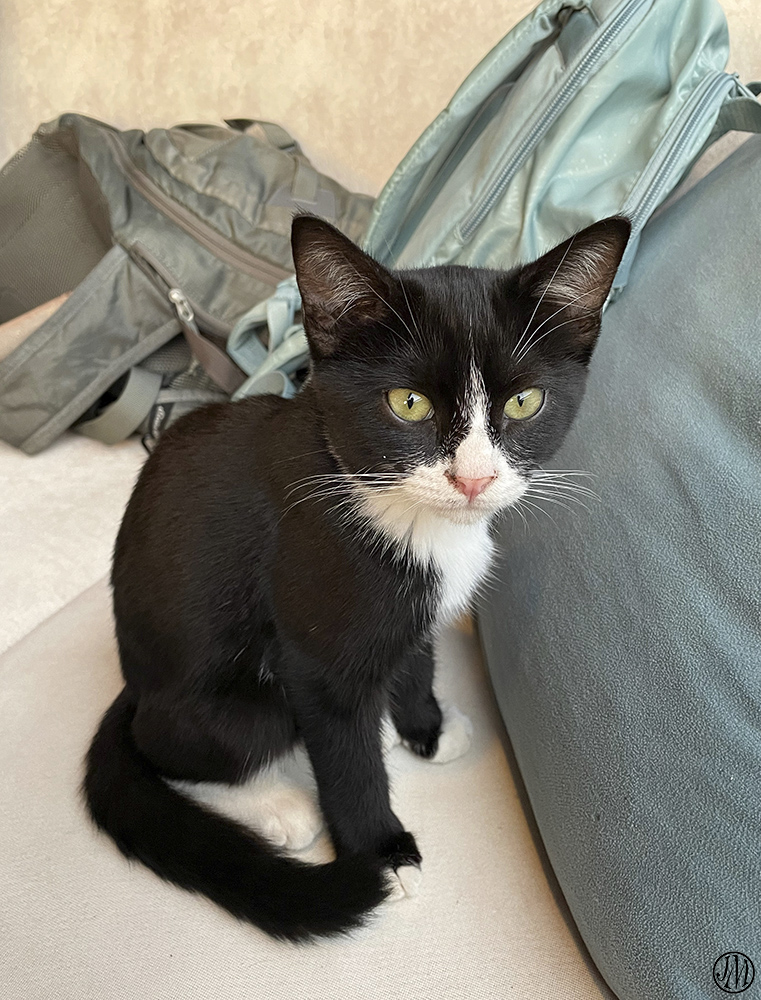
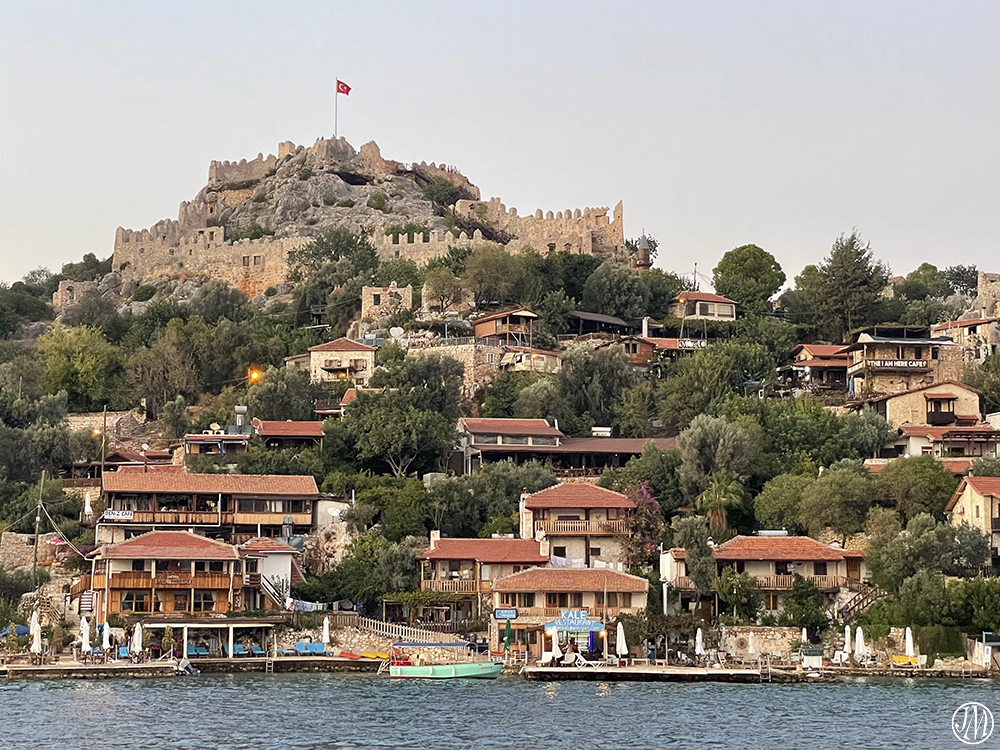
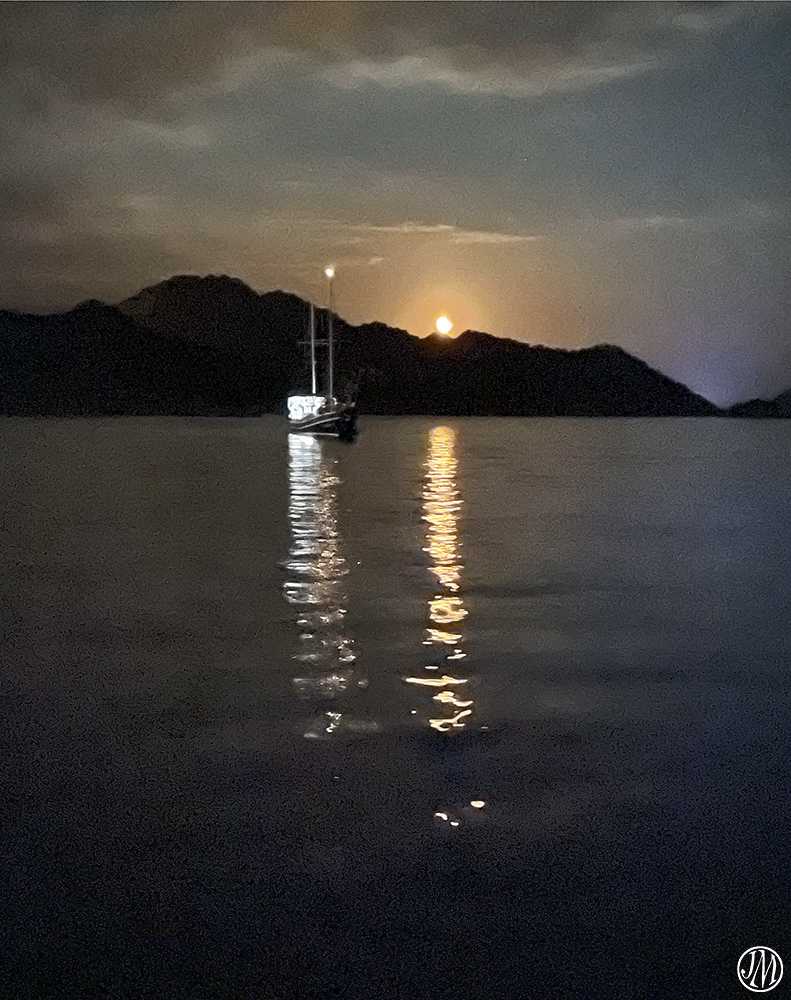
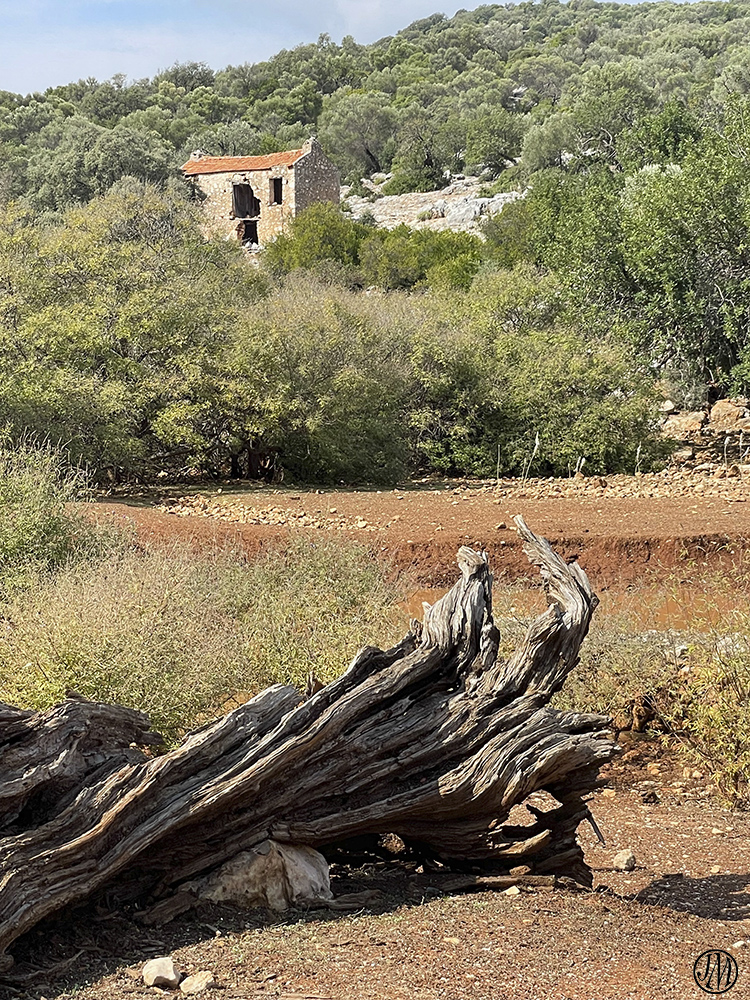
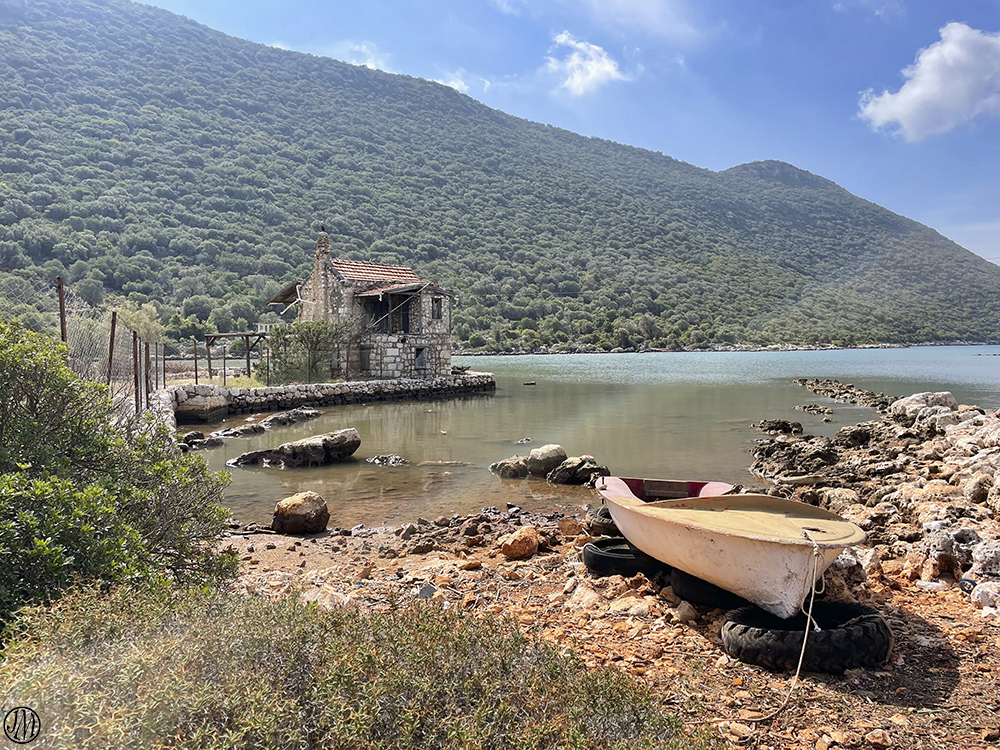
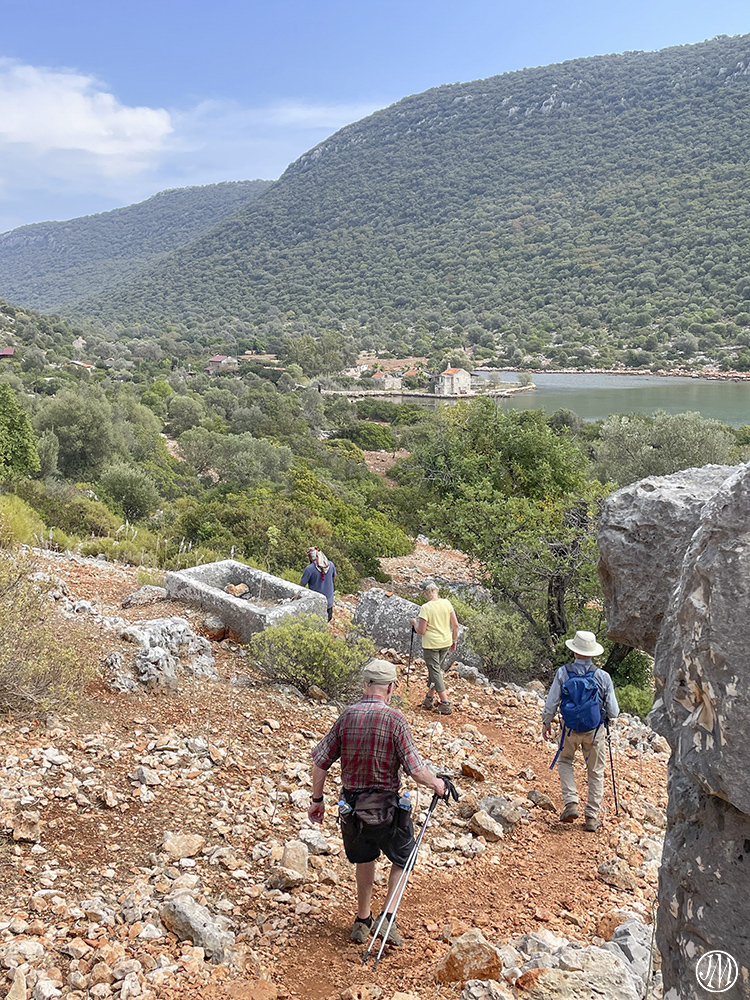
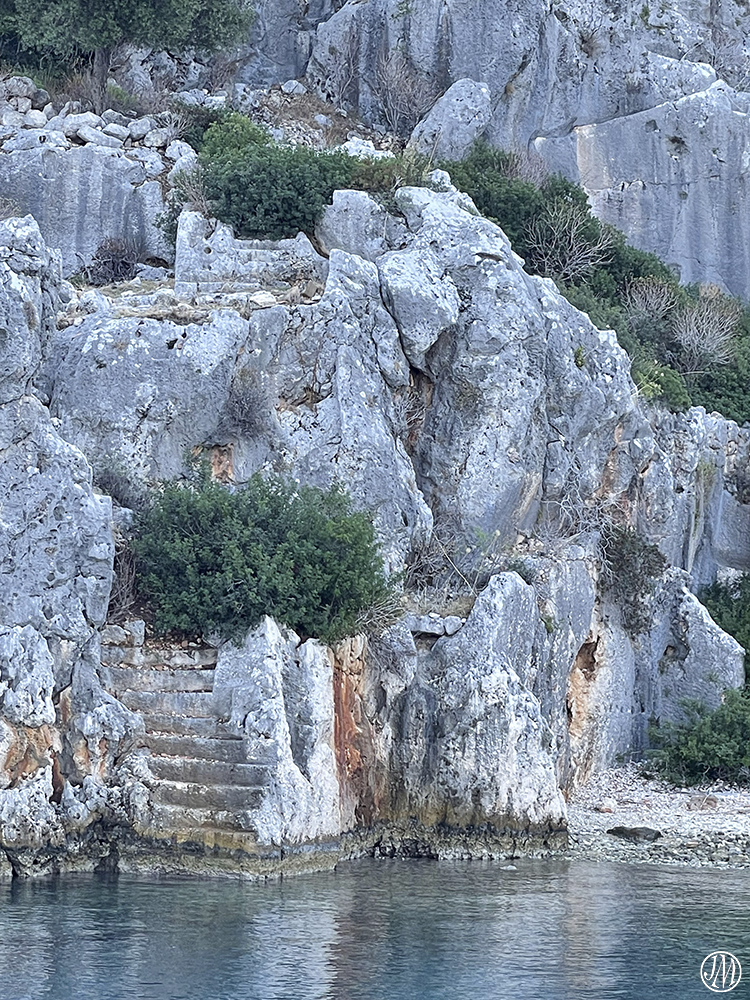
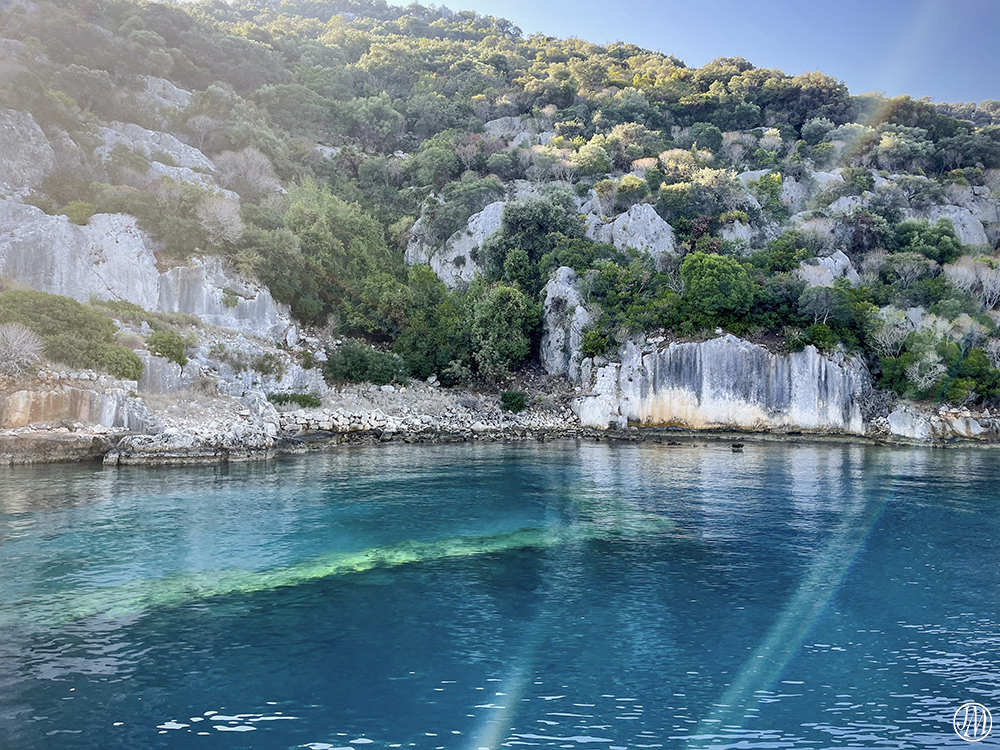
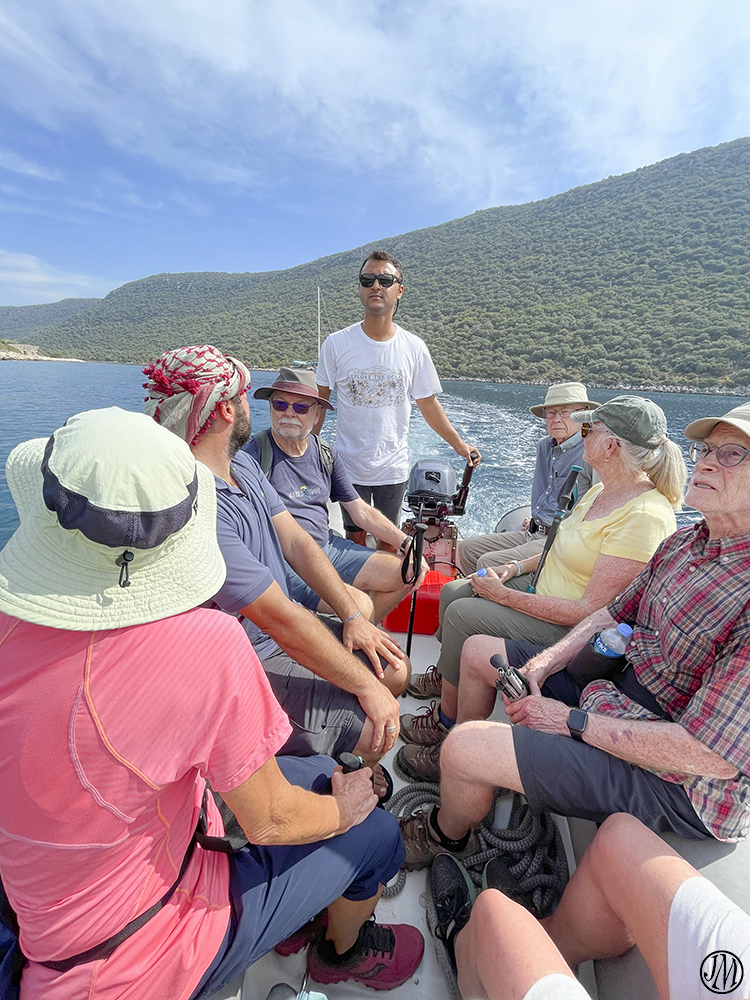
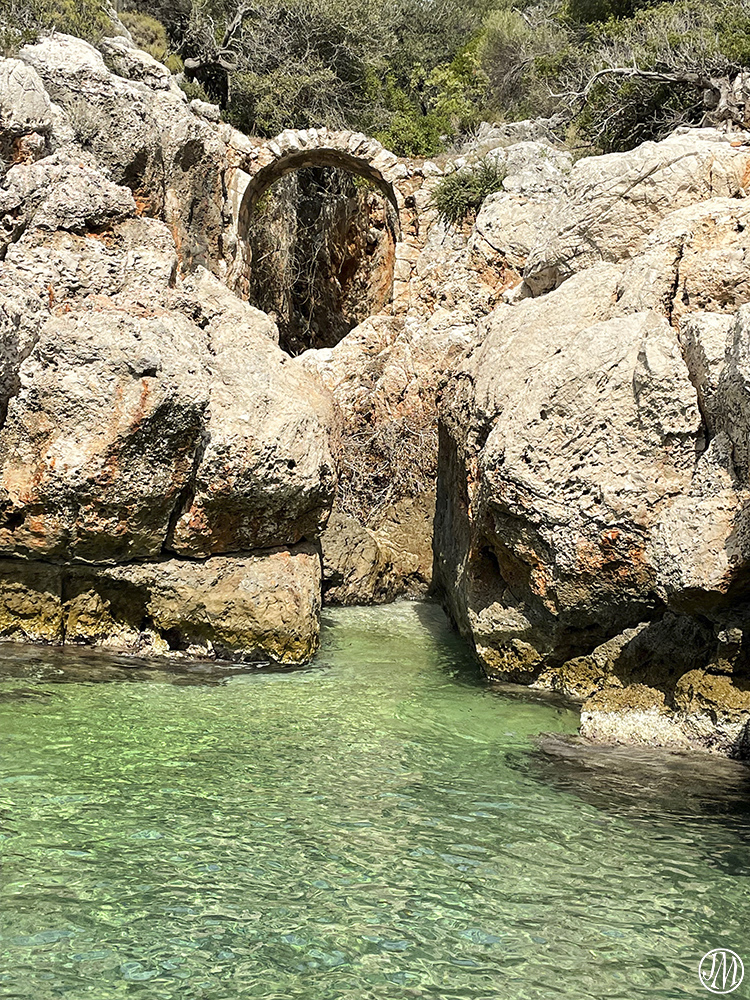
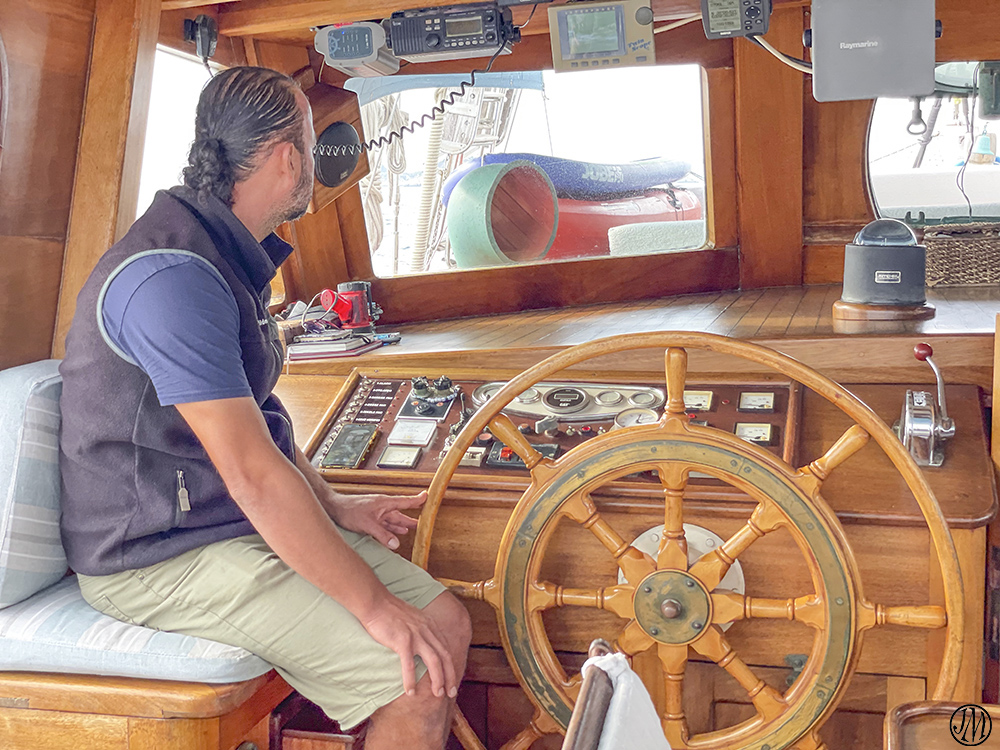
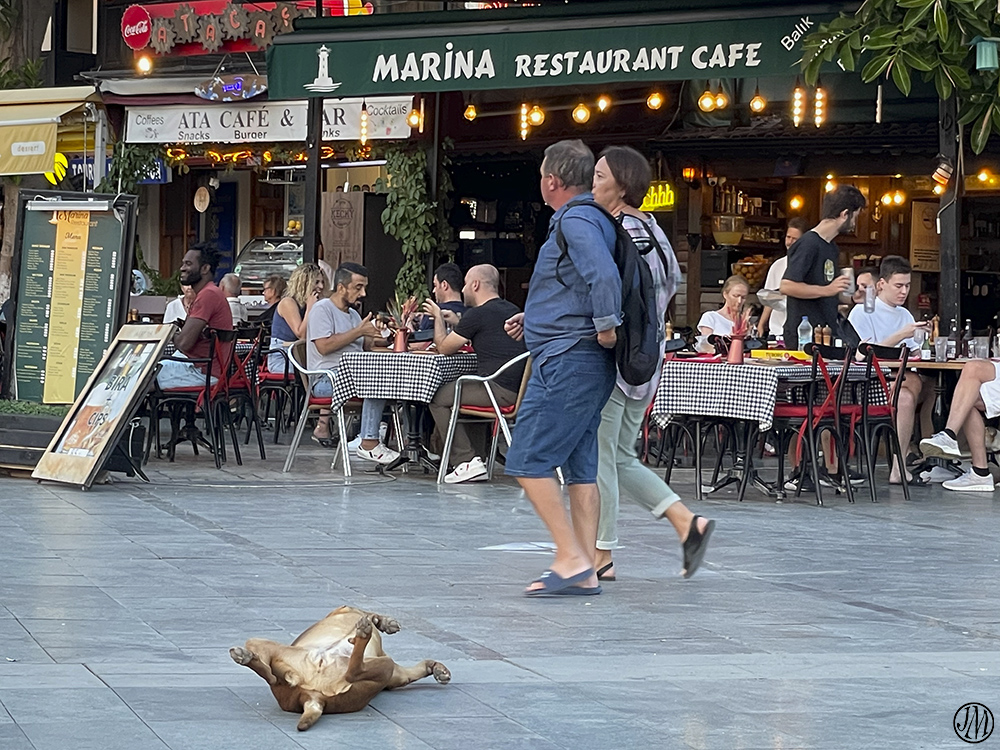
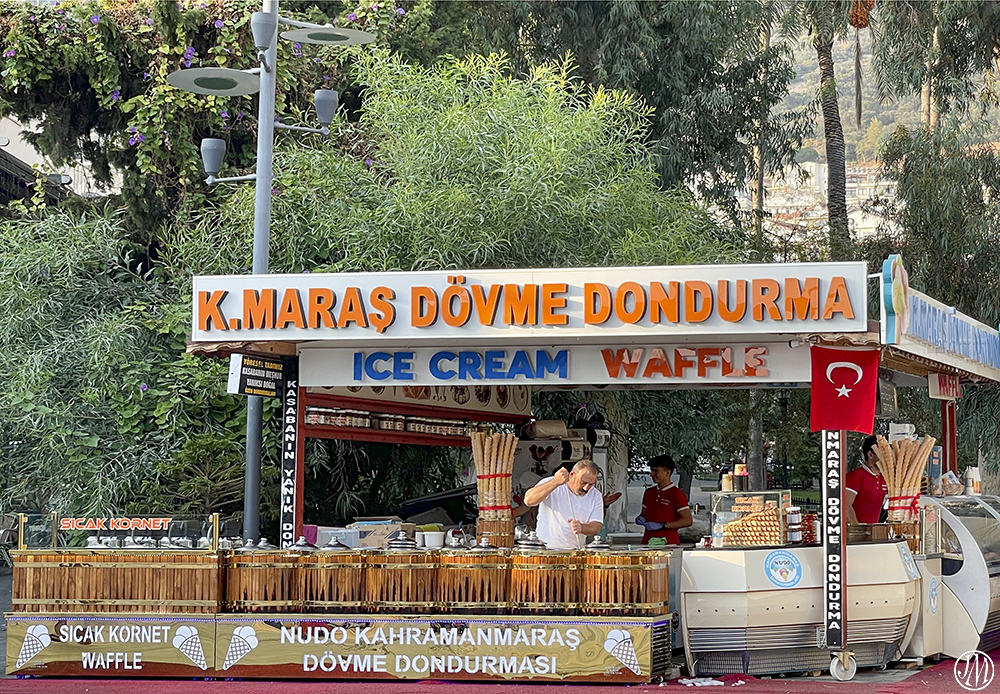
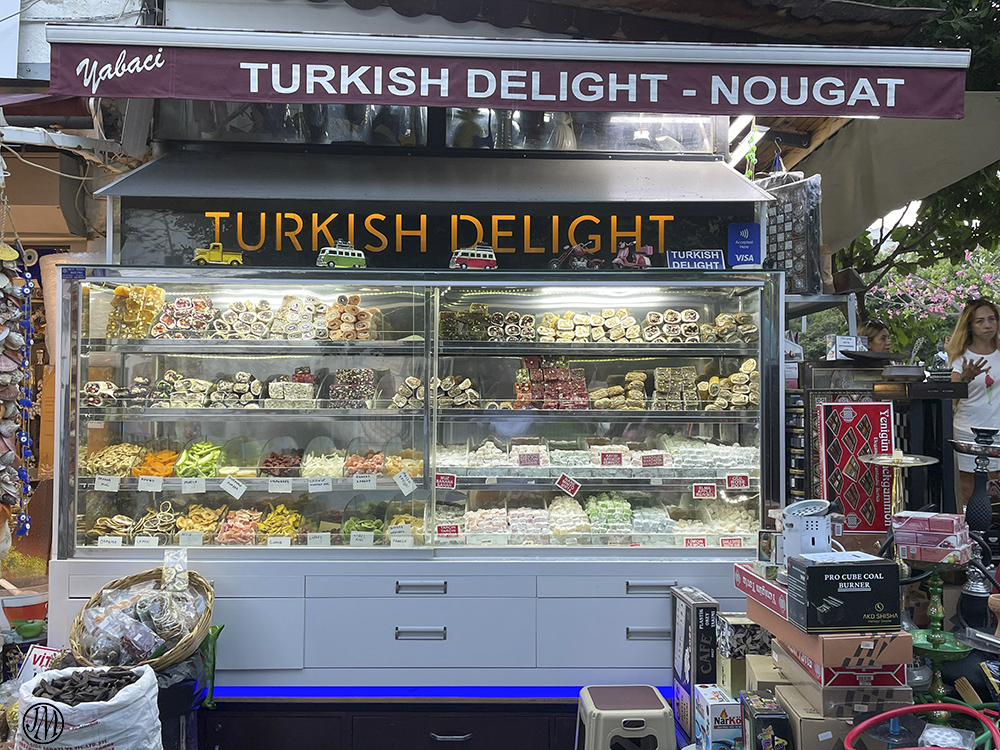
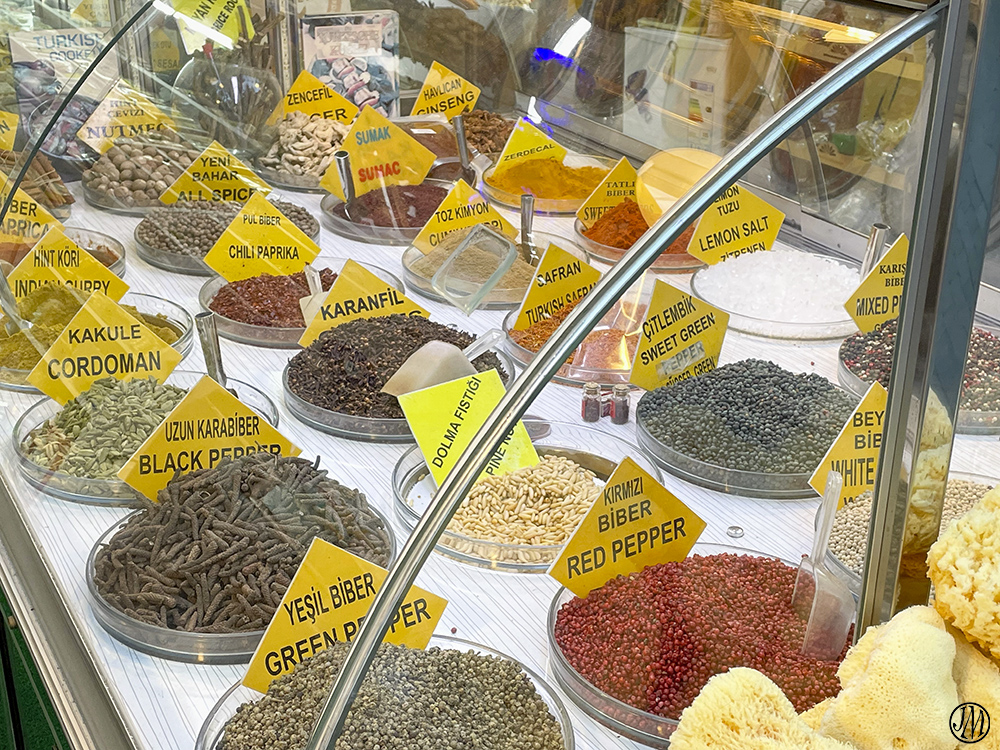
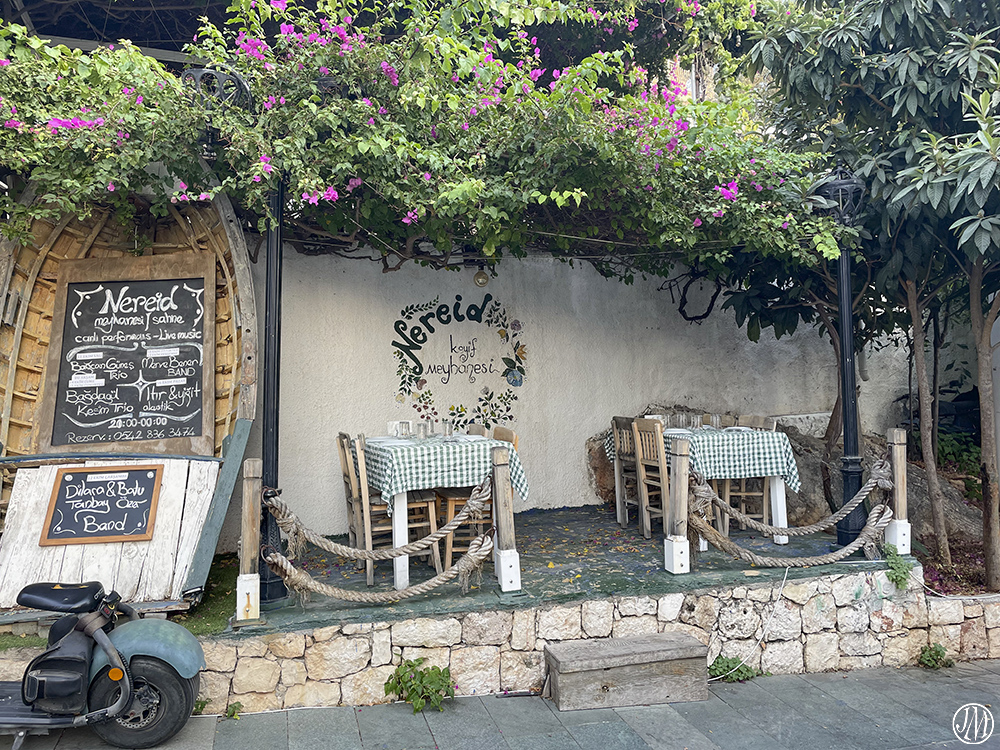
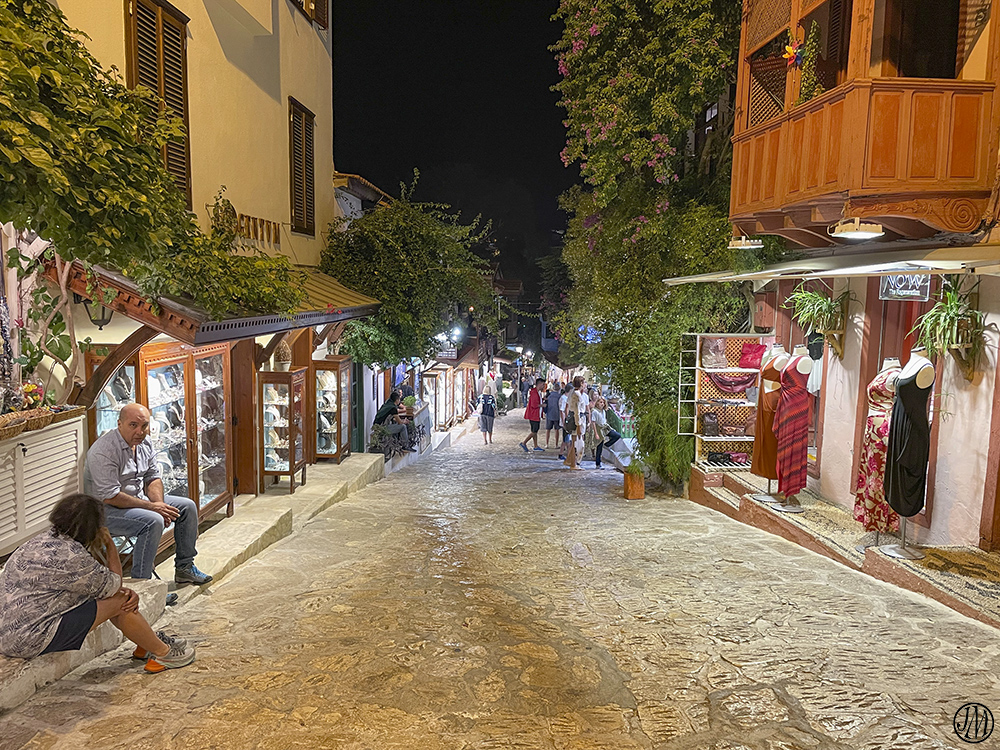
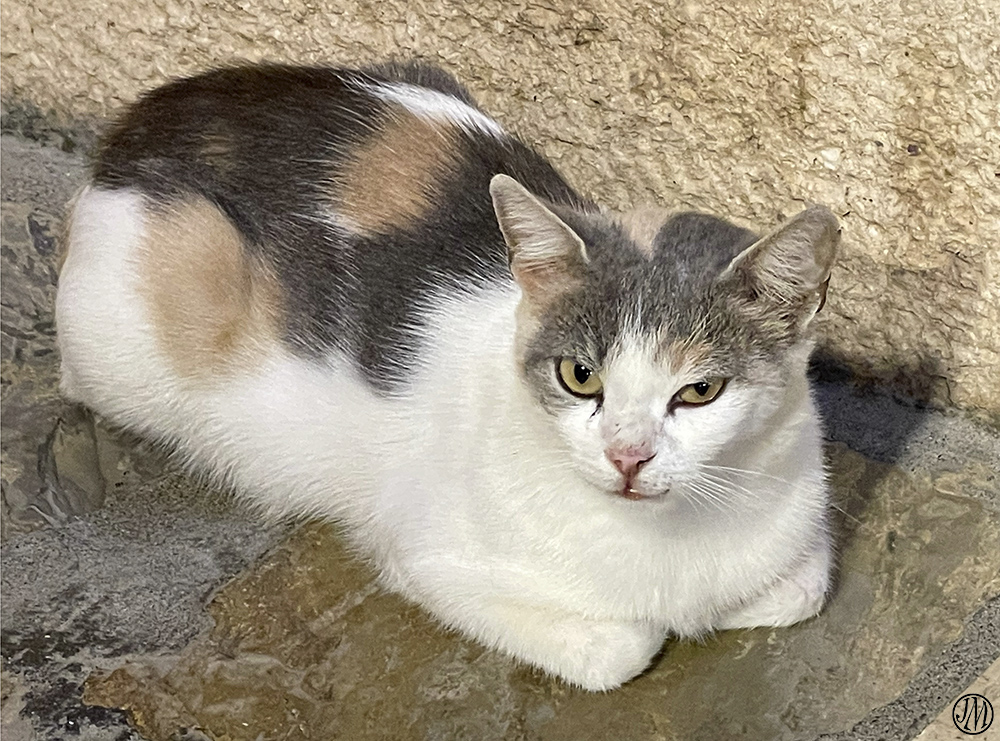
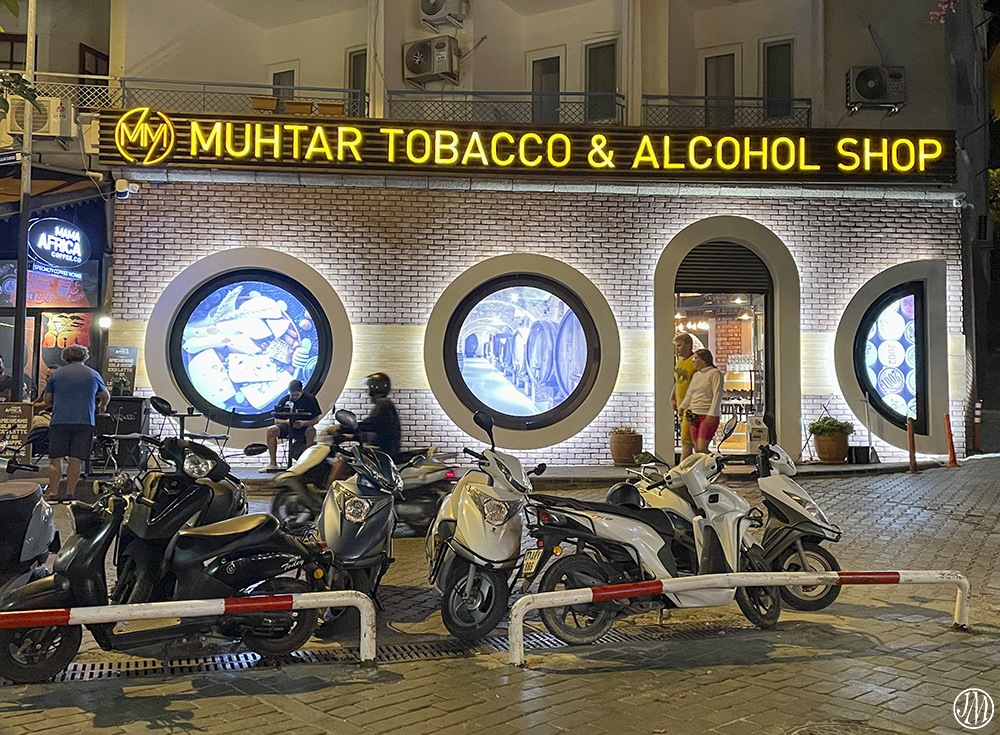
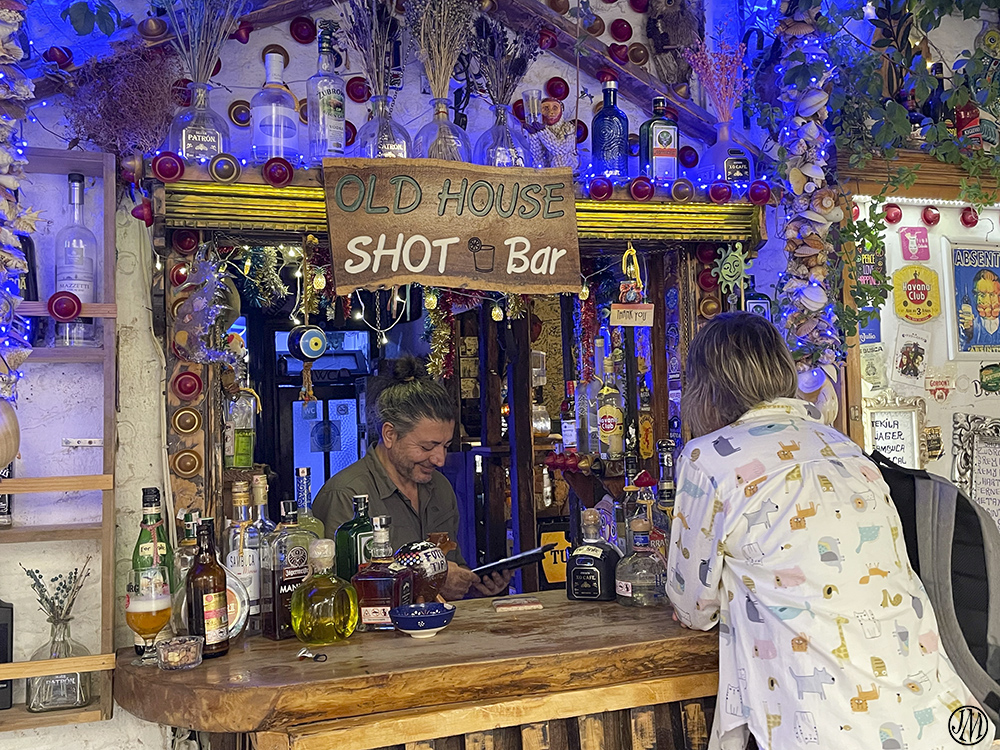
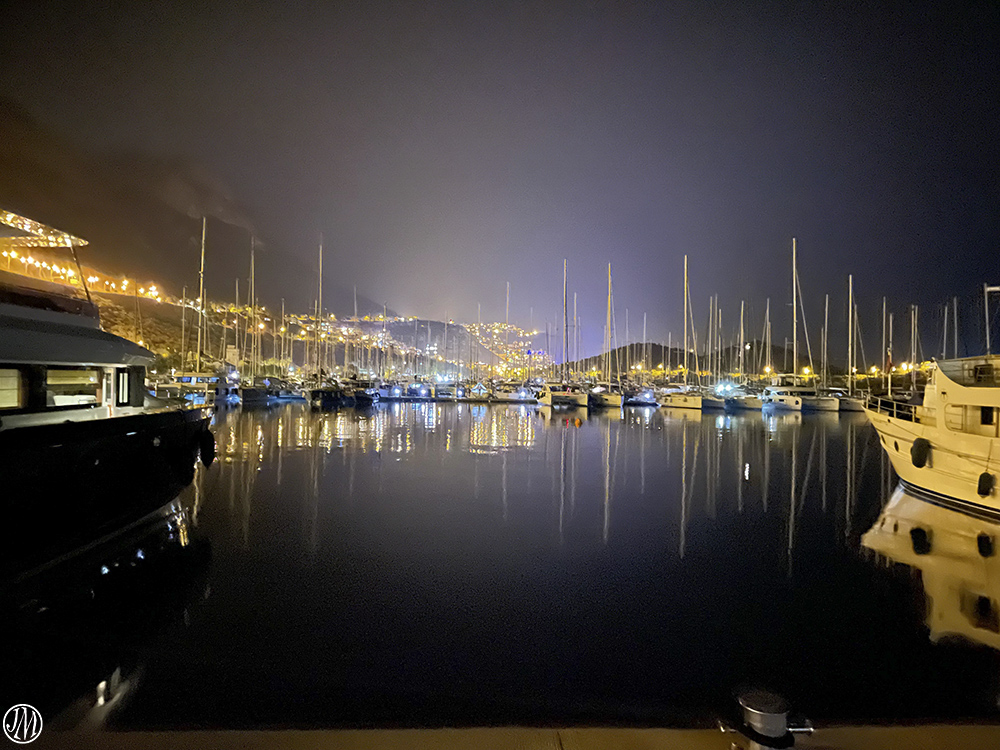

Hello Joanna, this is Enver Lucas, owner of Cavurali and local operator for Wilderness Travel. Just wish to say thank you once again for the wonderful rendering of your trip with us. I would like to share your travelog with W’lderness Travel and others who would like to be properly informed about the Turquoise Coast. Please let me know if there is a problem with this. Thank you again for your patronage!
Another wonder blog about our trip. Thank you Joanna.
What an amazing day and those frescoes, and those tombs with their carvings… and, and, and
Absolutely stunning. Great photos. Very cute cats and loved the sleeping hound. Beautiful countryside and views.